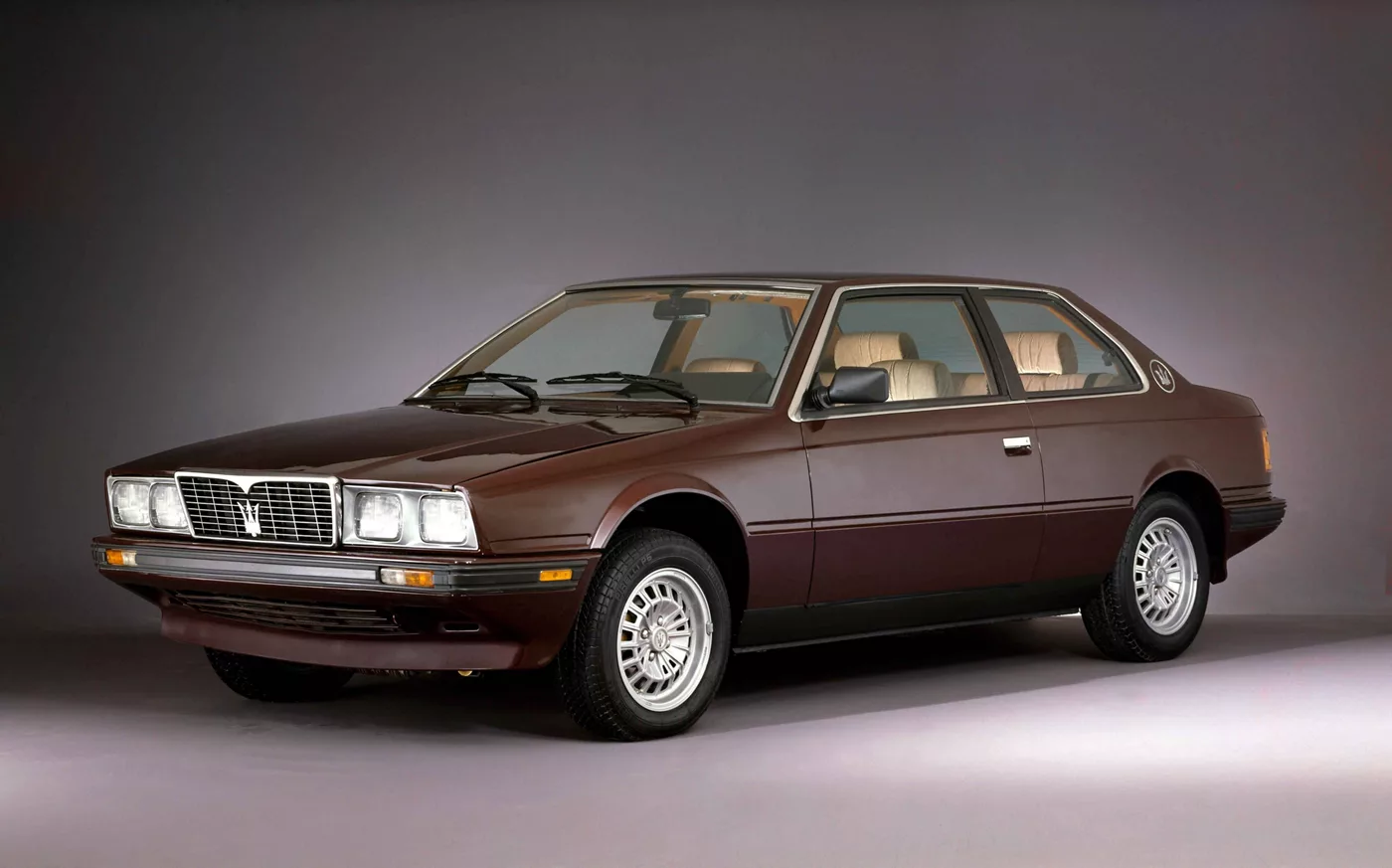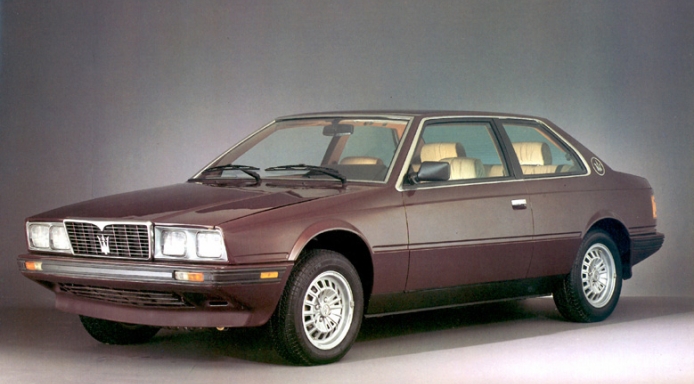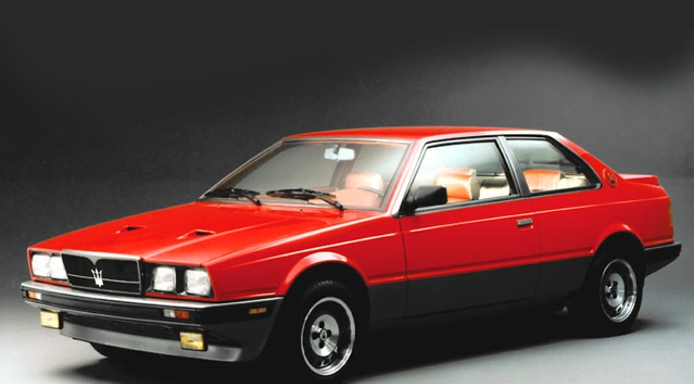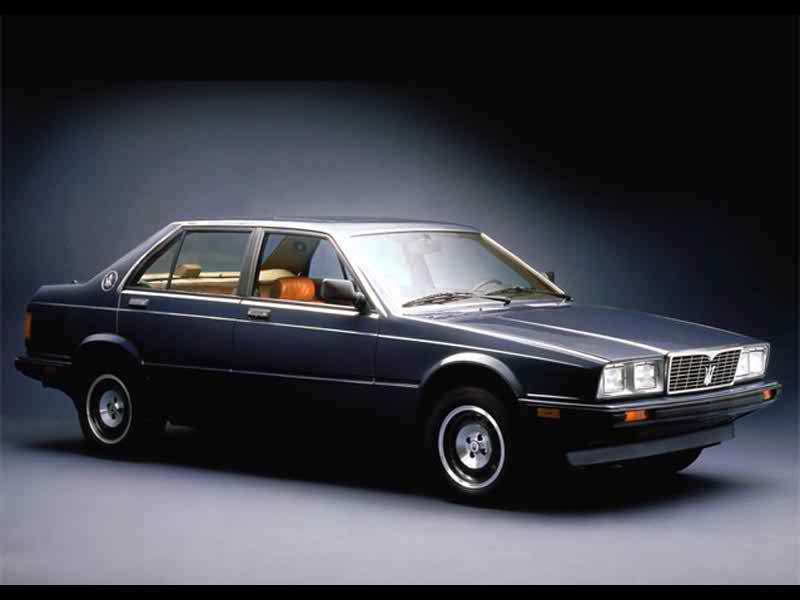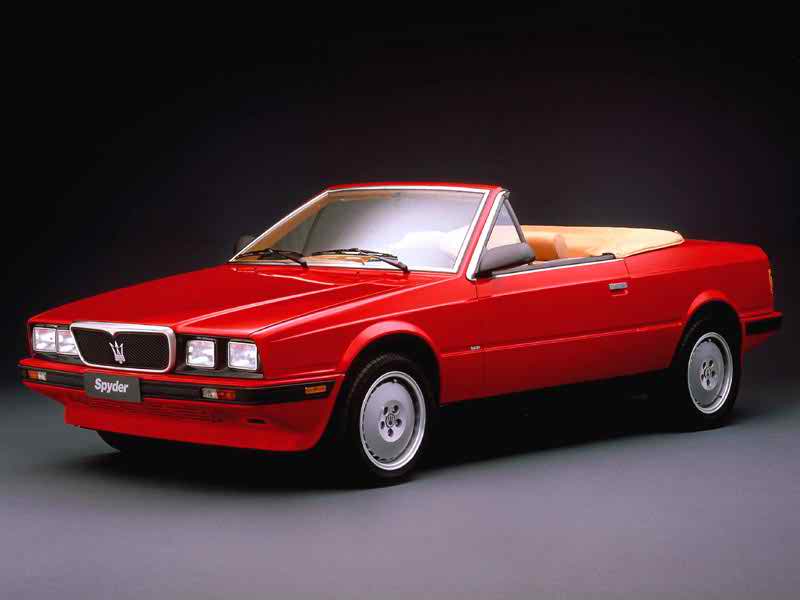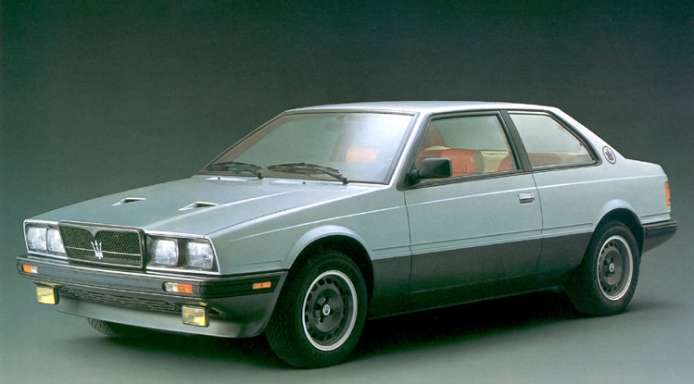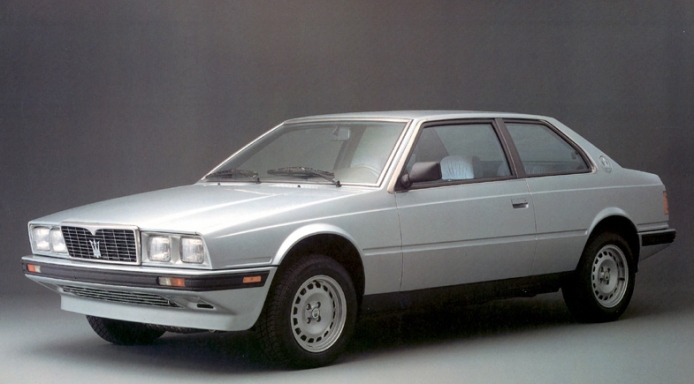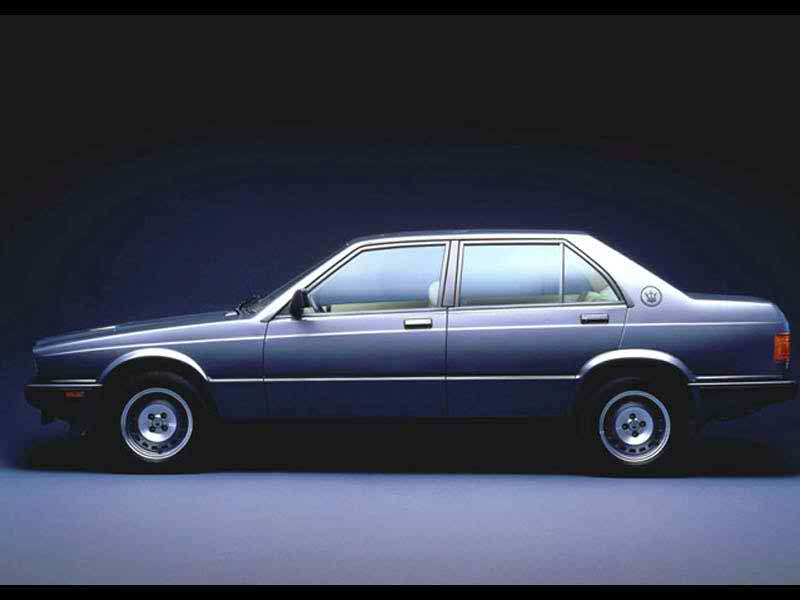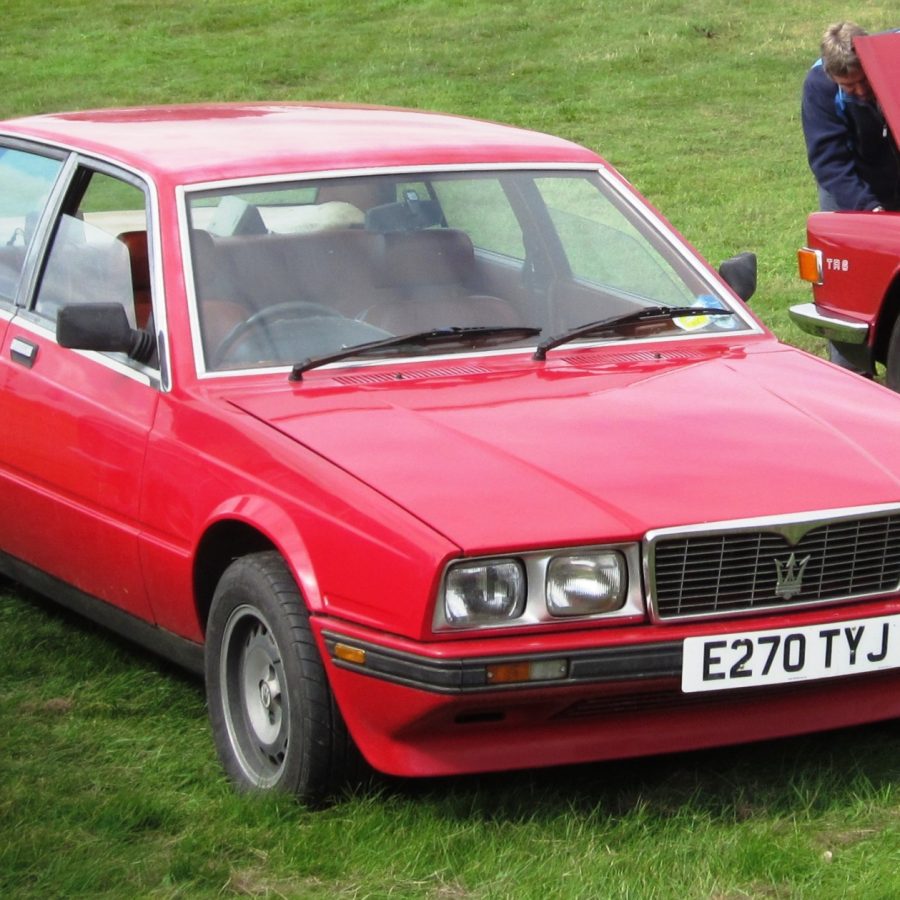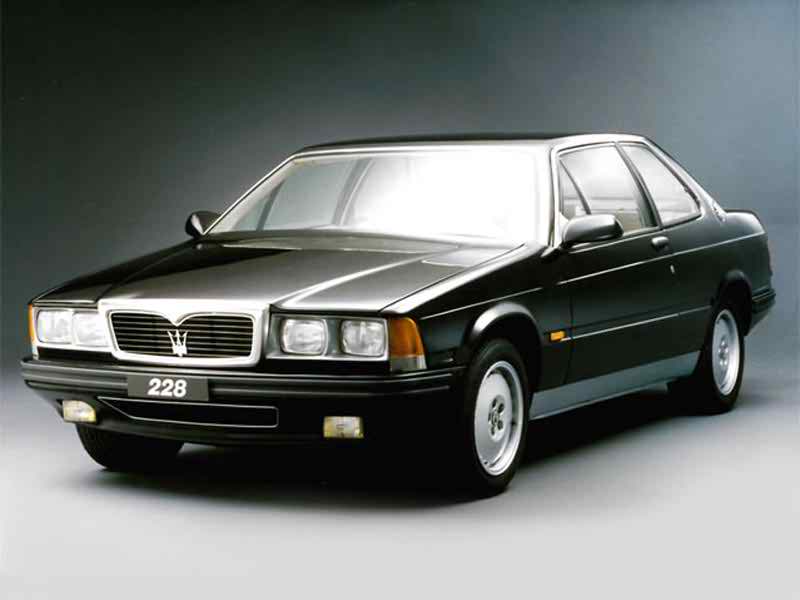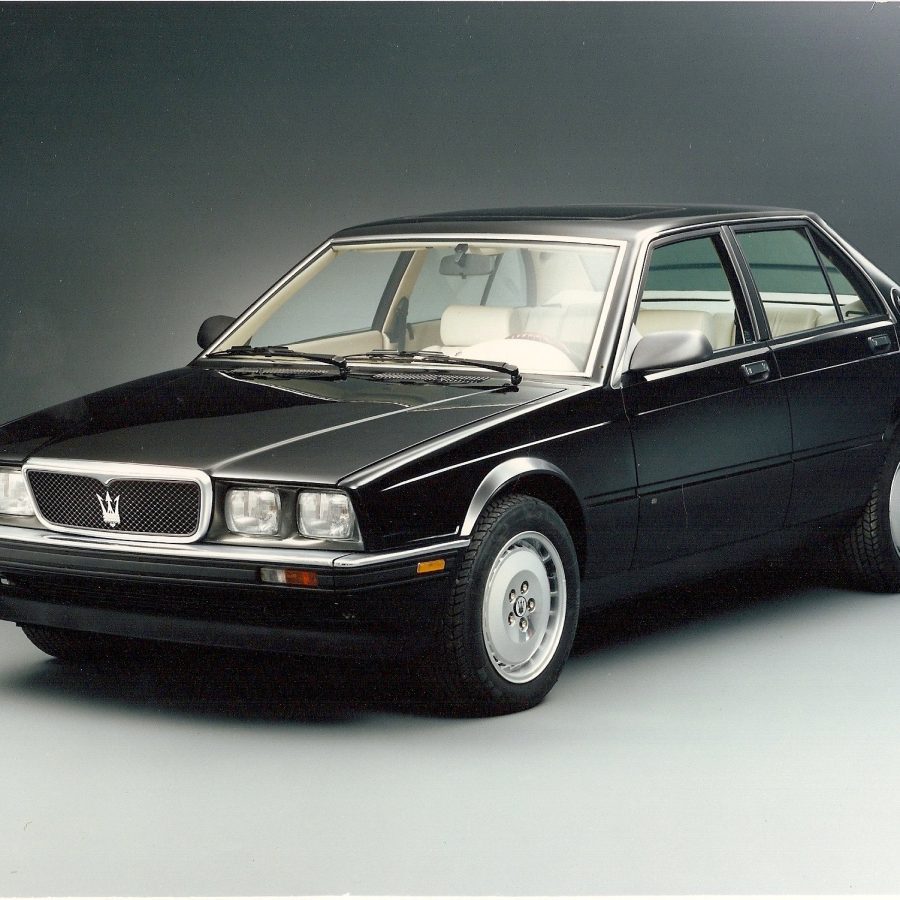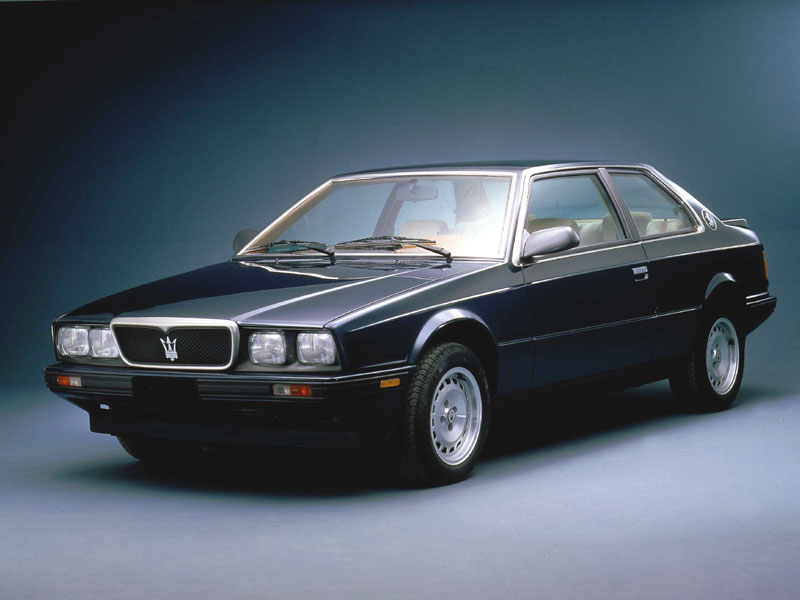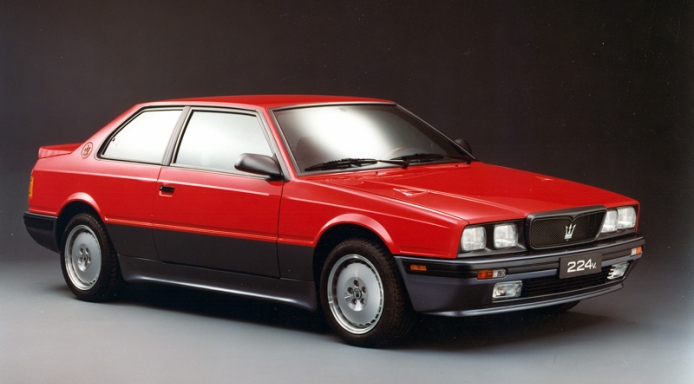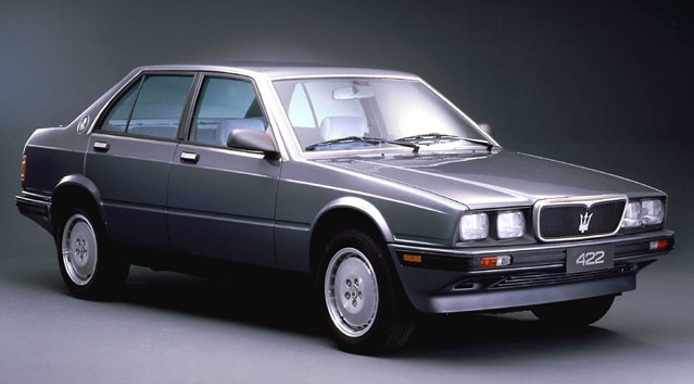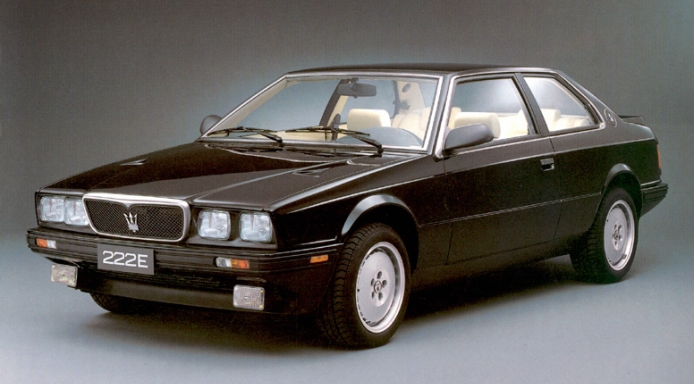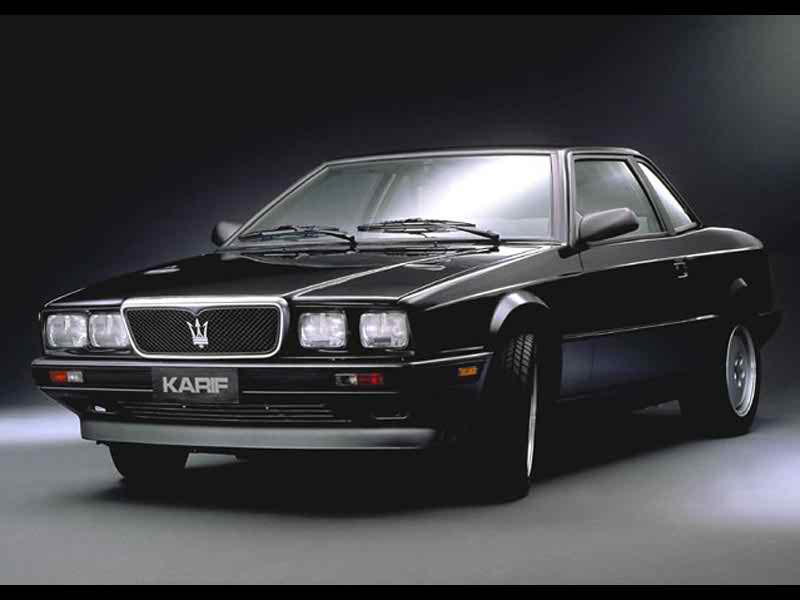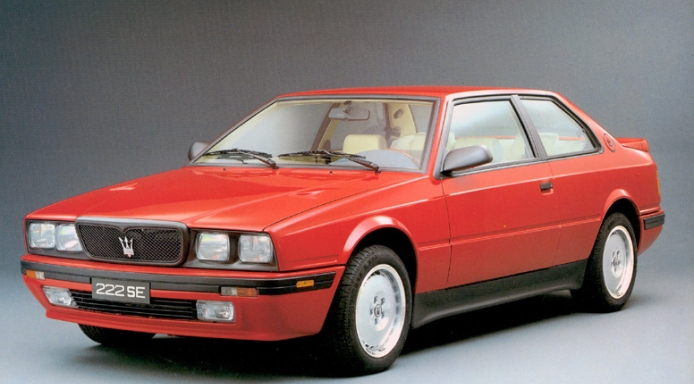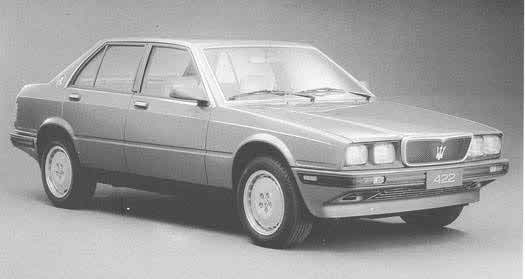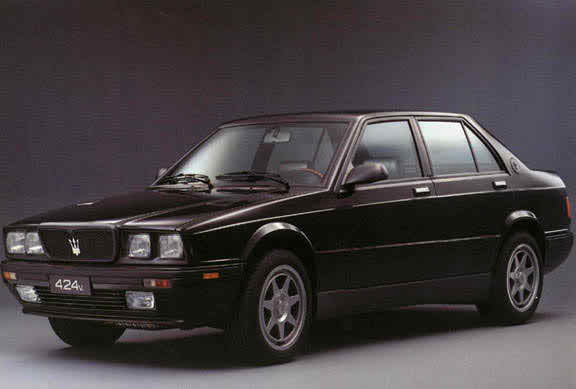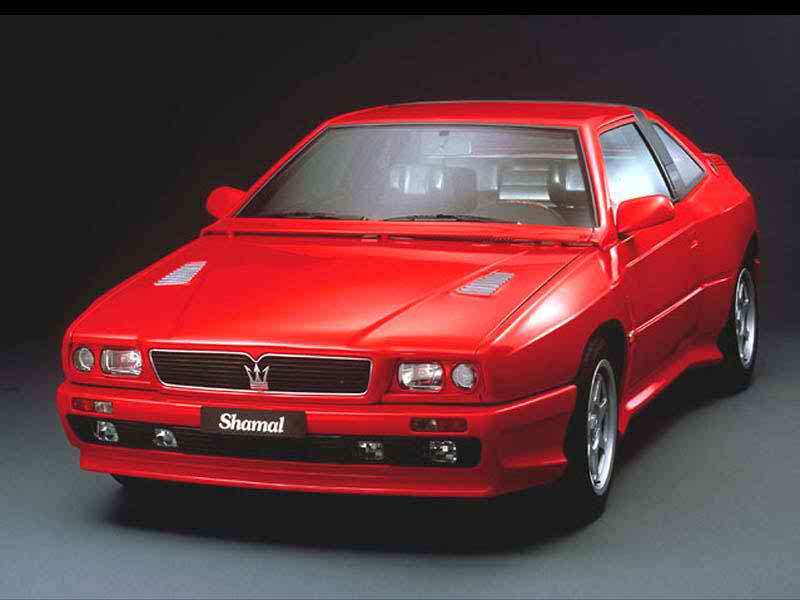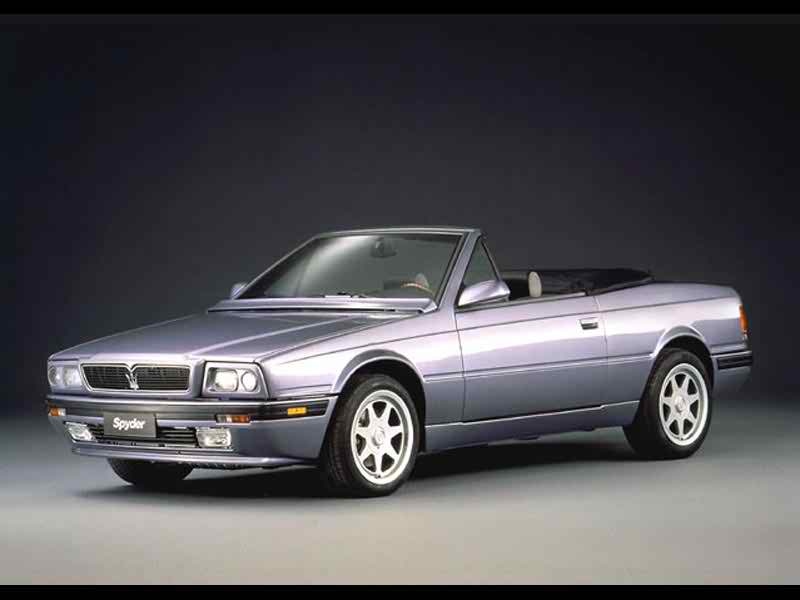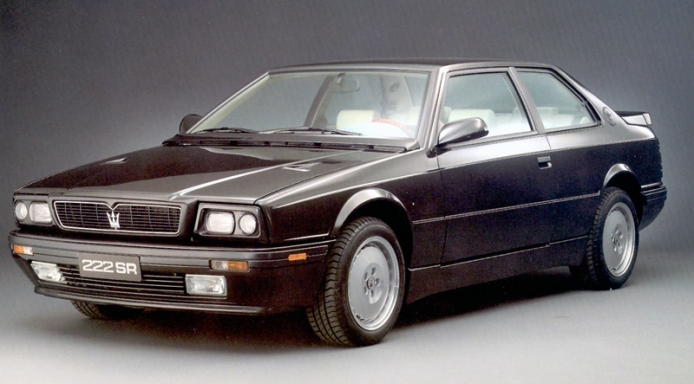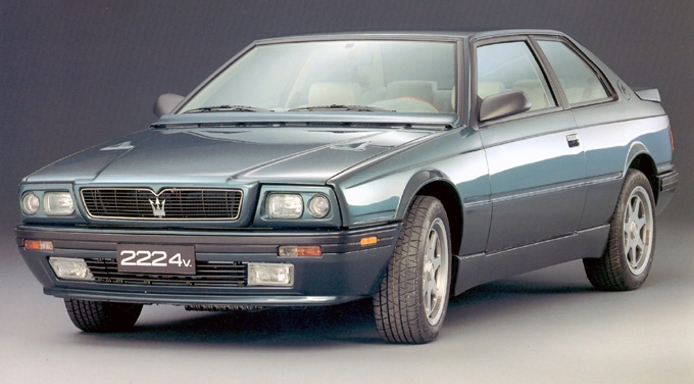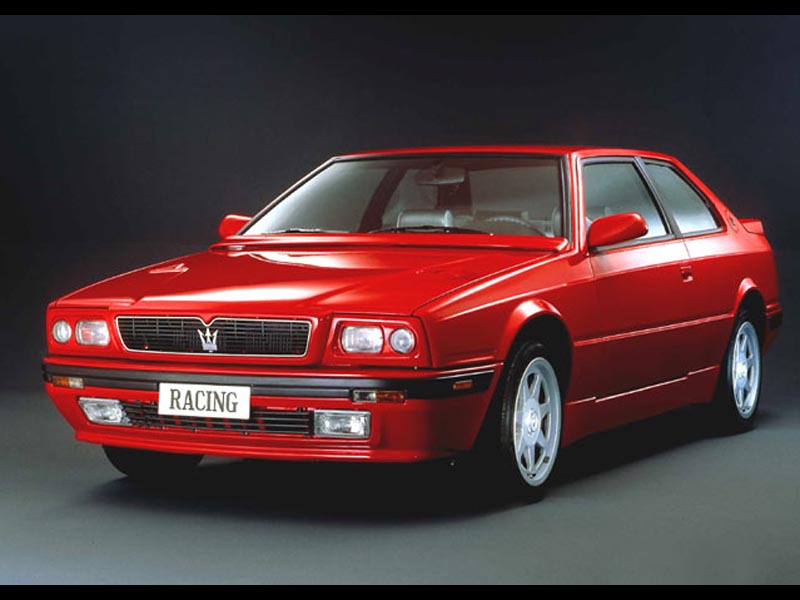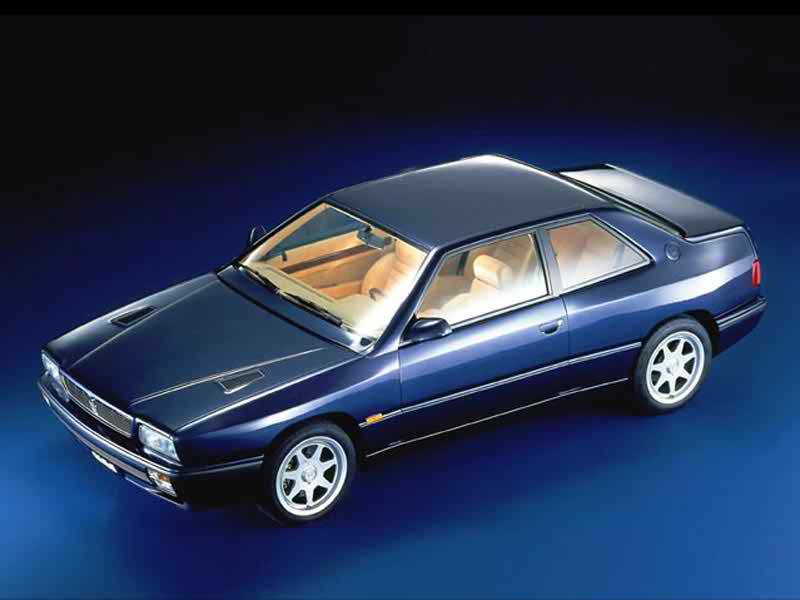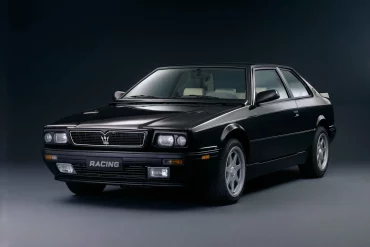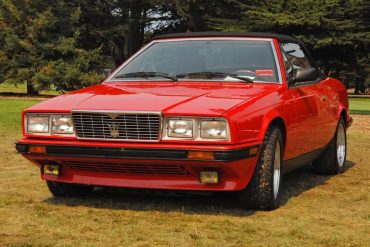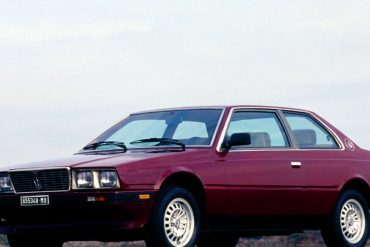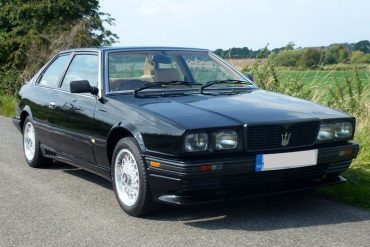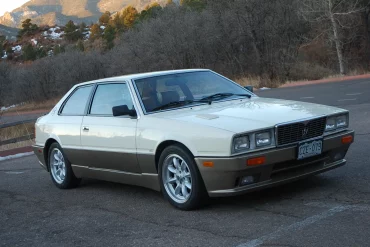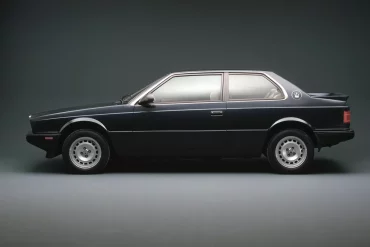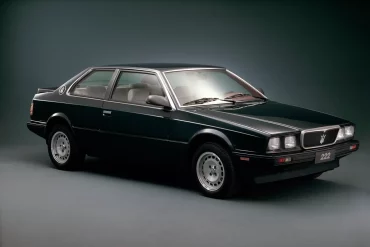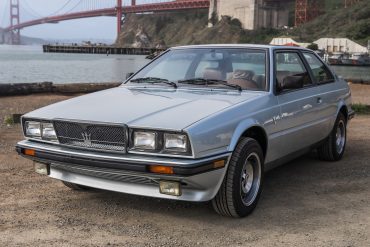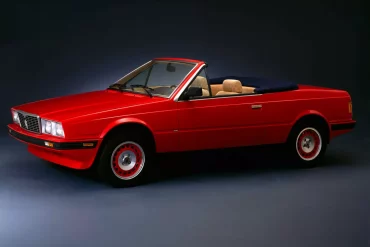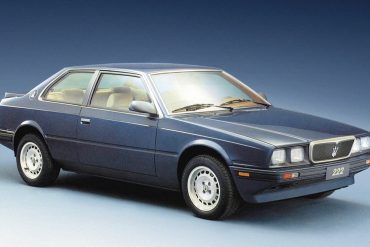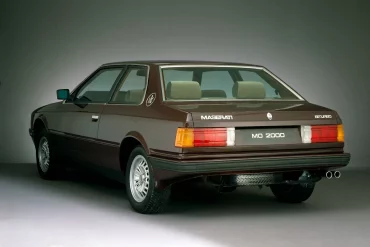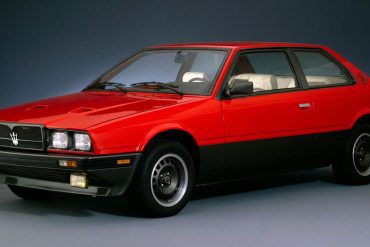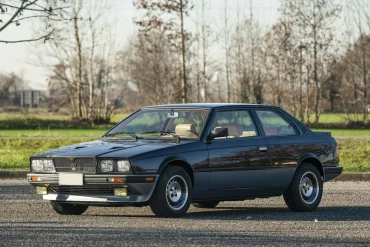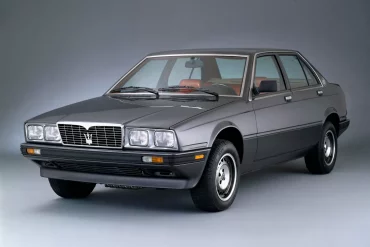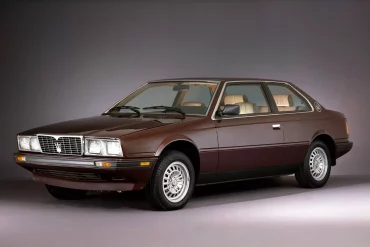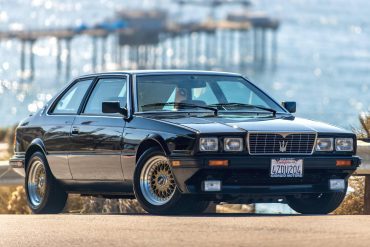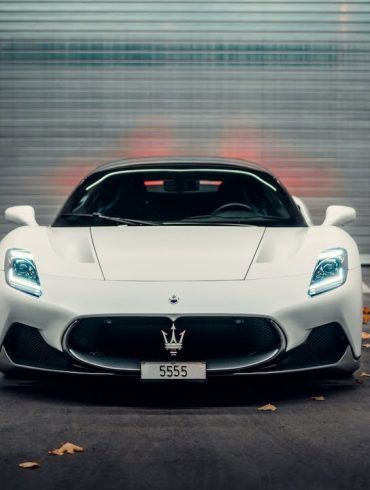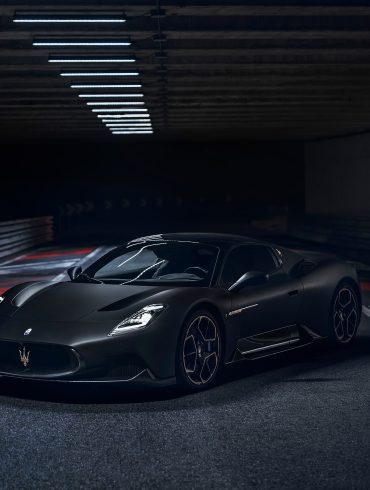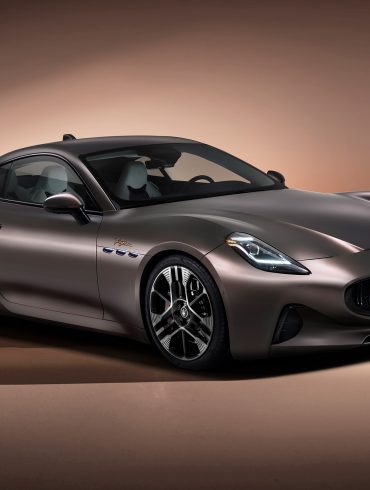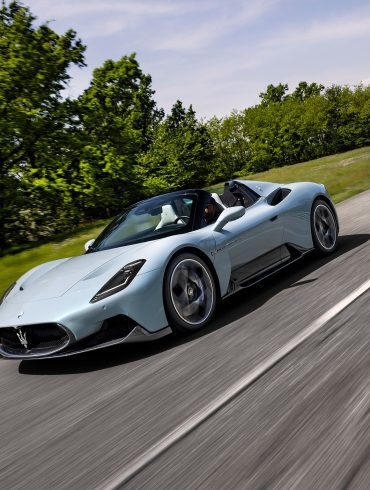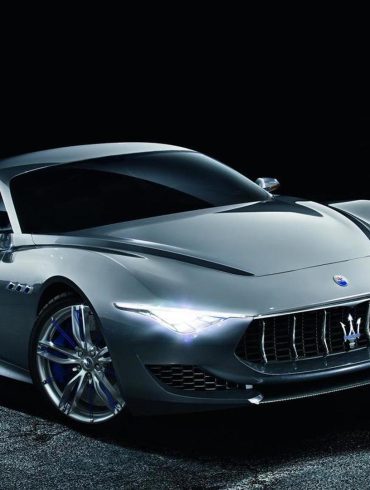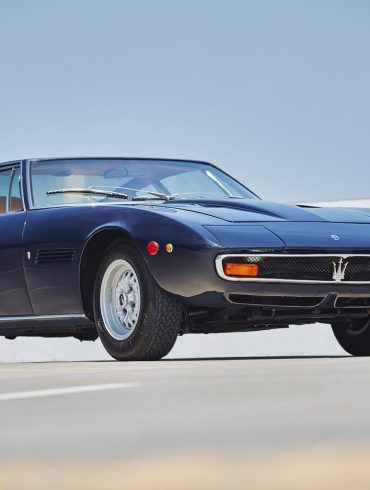1981→1985 Maserati Biturbo Officially presented on December 14, 1981 (the company was born on 12/14/1914), the Biturbo was the car that turned Maserati around by re-entering the 2.0-litre class. Sales started in April 1982 in Italy. Assembled at the Innocenti works in Milan, the car sported a compact notchback coupé...
Maserati Biturbo
The Biturbo, Karif, Shamal, Ghibli & Racing
1981 - 1994
The Maserati Biturbo was a bold and groundbreaking car that aimed to bring accessible performance and Italian flair to a broader market. Its twin-turbocharged V6 engine delivered thrilling power, while its sharp 80s styling and luxurious interior exuded a sporty persona. However, the Biturbo's ambitious engineering and rushed development led to notorious reliability problems. Build quality was inconsistent, and mechanical gremlins plagued many examples. Still, the Biturbo holds a unique place in Maserati history - a flawed but fascinating machine.
The Maserati Biturbo & Derivatives - An In-Depth Guide
Biturbo
Maserati entered a new era with the Biturbo in December 1981. Company owner Alejandro De Tomaso envisioned the sporty coupe as a means of increasing the brand’s reach with a new model offering top performance and a competitive price: a bold strategy for attracting new customers to Maserati. What is a biturbo engine? The Biturbo’s engine was a new and compact 90-degree V6 that featured induction via two small turbochargers—a world’s first on a production car.
The Biturbo was a big success, thanks to its excellent performance and luxurious interior, although first-generation versions challenged the factory’s production capacity. In 1983, the more powerful Biturbo S featured twin intercoolers, distinguished by two NACA air ducts on the hood. In 1986 and 1987, both versions were upgraded with fuel injection as the Biturbo i and Biturbo Si.
Biturbo Export
While 2.0-liter versions of the Biturbo were reserved for the Italian market, a 2.5-liter version developed for export was presented in 1983. The three-valve-per-cylinder V6 engine had an increased bore to expand its capacity to 2,491cc. Cylinder liners of cast iron replaced aluminum, and this engine did not rely on intercoolers for the two IHI turbochargers.
The Biturbo 2500 maintained the Torsen limited-slip differential from the previous models (a world-first on a production car), while a more powerful version was named Biturbo ES. In 1987, the Biturbo 2500 and Biturbo ES adopted fuel injection and the name was changed to Biturbo Si 2500.
222 - 2.24v
The 222 name referred to the 2-door body style, 2.0L engine displacement, and 2nd step of the Biturbo evolution. The front grille was new and the Naca air ducts on the bonnet disappeared, while the engine still had twin intercoolers. Fuel injection was now electronic from Weber-Marelli with integrated ignition. The 222 had electrically adjustable seats and electronic climate control. In 1989, the twin-turbo V6 engine received a substantial technical upgrade.
The cylinder heads were new with four valves per cylinder instead of three, and two camshafts per cylinder bank. The light alloy cylinder liners were treated with a special coating to reduce the engine's internal friction. Vehicles equipped with this more powerful version of the two-litre engine were named 2.24v.
Compared to the standard Biturbos, the 2.24v featured restyled front and rear aprons, extended sills, a large tail spoiler and a two-tone paint scheme. Later cars were equipped with a catalytic converter and an optional active damping control system by Koni. The model was subject to a restyling in 1991.
222 Export
Introduced in 1988 as a replacement-upgrade for the Biturbo Export, the 222 E was designed by the renowned stylist Marcello Gandini. Among other refinements, it featured modifications that improved aerodynamics like a rounder nose, new mirrors and a rear spoiler. Less than two years after the launch of the 222 E, the sportier SE version was introduced, following in the footsteps of the Biturbo S.
The 222 SE was updated in 1991, with new lights, a radiator grille, seven-spoke alloy wheels and a novel aerodynamic spoiler at the base of the windscreen, and badged as 222 SR. Engineering advancements included the newly devised “intelligent” suspension as an option.
The 222.4v was very similar to the 222 SR, but benefited from the use of four-valve-per-cylinder heads and four overhead camshafts, boosting the power output by more than 50 hp.
425
Just two years after the Biturbo had been launched, Maserati introduced a four-door variant which maintained the same styling, but was built onbased on a longer platform with a 2,600mm wheelbase. With the Quattroporte competing in a higher segment, the 425 marked a new entry for the Trident in a competitive market for fast luxury sedans of contained dimensions. The engine was the new 2.5L evolution of the V6 just introduced on the Biturbo for export markets.
Twin-turbo technology allowed the 425 a top speed in excess of 215km/h, whilst at the same time keeping the price reasonable. The very refined interior featured ergonomic seats with velour designed by Missoni, or leather trim to order. The air conditioning was standard equipment, hereas a very elegant set of leather bags and suitcases was offered as optional.
420
The 420 was launched in 1985, two years after the 425. It was simply the same car overall, only with the 2.0L V6 in place of the 2.5L unit. This model was meant primarily for the Italian market, where cars with engines over two litres of capacity were heavily taxed by the government during the 1980s.
Introduced simultaneously with the 420, the sportier 420 S saw its power output raised by 30hp to reach an impressive 210hp for an engine with two-litre of capacity. This increase was due in great part to the use of twin air-to-air intercoolers, the presence of which was given away by two NACA ducts on the bonnet. The model was very similar to the Biturbo S, only with four doors and the implied longer wheelbase. Hence the body followed the same treatment with a two-tone paint scheme (silver or red over grey lower-body) and blacked-out chrome trim.
The interior was trimmed by hand in red leather, deployed on the central part of the seats, centre console, dashboard and armrests. From 1986, the 420 adopted a Weber fuel injection system, thus becoming the 420i. The car was otherwise unchanged, save for minor improvements to the suspension system.
430
The 430 was launched in 1987 to be sold alongside the 425, and finally replaced it in 1989. It was equipped with the new 2.8-liter fuel-injected engine from the 228, and was intended primarily for export markets. The power output reached 250 hp for versions without a catalytic converter, and the top speed approached 150 mph. Such performance, paired with the luxurious refinement of the interior, made the 430 a contender at the very top end of the luxury-sport sedan market.
Only 995 examples were built between 1987 and 1994. The new four-valve-per-cylinder heads were adopted on the 430 from 1991, increasing the power output to 279 hp. The car bore the 430 4v nametag, to differentiate it from the three-valve model, which was continued.
Both models benefited from the latest styling upgrades: new, slimmer headlights, a wider front grille, new bumpers and sills, seven-spoke alloys, and spoilers on the trunk lid and at the base of the windscreen.
422
The 422 was introduced in 1988 as a replacement for all previous versions of the 420 four-door family, including the 420 Si from which its mechanicals were derived. The car was restyled with a new front grille, mirrors and five-bolt alloy wheels. In 1990, the 4.24v mirrored the two-door 2.24v, using the latest four-valve-per-cylinder, four overhead-camshaft V6 engine. Styling enhancements (including blacked-out chrome trim, specific bumpers and rocker panels along with a discreet spoiler on the trunk) conferred a sporty yet refined allure to this high-performance sedan.
The independent suspension featured active electronic control on all four wheels, while the interior’s mix of leather and wood trim conveyed a feeling of exclusivity. Launched in December 1990, the 4.18v was similar to the 422, designed with smaller displacement for the Italian market. Its main feature was ABS fitted as standard, a first for the Biturbo family.
Produced in only 77 units, this particular model is unquestionably one of the rarest models within the Biturbo range.
Biturbo Spyder
Top performance and top-down driving fun were features of the Biturbo Spyder, the first open Maserati since the Ghibli Spyder more than 12 years earlier. Milanese stylist Zagato handled the design’s development, while the bodies were assembled in Turin before transportation to the Maserati factory in Modena for final assembly.
The Biturbo’s 2,514 mm wheelbase was shortened to 2,400 mm for the Spyder models, which evolved through various versions and followed the same technical and aesthetic development as the coupe, with the exception of the 24-valve 2.8-liter engine that was never installed in the open models. The engines were the same 2.0-liter V6 for the home market, and 2.5-liter unit for export.
The Biturbo Spyder was launched following the true Maserati heritage, and featured a leather interior and gold Maserati watch on the dashboard.
Biturbo Spyder '90
A revised Biturbo Spyder A revised Biturbo Spyder was introduced in 1989. These cars, with bodies still produced by Zagato, were distinguished by larger, 15-inch alloy rims and redesigned front and rear bumpers.
The export model received a V6 engine enlarged to 2.8 liters, and these cars are often referred to as the Spyder '90, dropping Biturbo from the name. introduced in 1989. These cars, with bodies still produced by Zagato, were distinguished by larger, 15-inch alloy rims and redesigned front and rear bumpers.
The export model received a V6 engine enlarged to 2.8 liters, and these cars are often referred to as the Spyder '90, dropping Biturbo from the name.
Spyder III
Restyling in 1991 brought a series of aesthetic and technical upgrades to the Spyder. The most significant modification regarded the introduction of four-valve-per-cylinder heads with four overhead camshafts, which served to increase performance despite the fitting of a catalytic converter required for certain markets.
From a styling point of view, the car was reworked with new, slimmer headlights, taller bumpers and sills, 16-inch six-spoke alloy wheels, more aerodynamic rear-view mirrors, and a distinctive spoiler at the base of the windscreen invented by world-renowned stylist Marcello Gandini.
228
With production of the 228-which began in 1987-Maserati offered an alternative to the large luxury coupes from Mercedes-Benz and BMW.
The design of the 2.8-liter coupe recalls much of the Biturbo, but its lines were softer, and the 228 was built on the longer chassis sourced from the four-door Biturbo models.
Standard luxury features included power steering, alloy wheels, central locking, electric windows and hand-stitched leather seats, with ABS available on request.
Karif
The Maserati Karif, presented at the Geneva Motor Show of 1988, was designed with sporting intent. It was powered by a 2.8-liter, twin-turbo engine, and its design was based on the shortened chassis of the Biturbo Spyder.
The Karif’s 114 mm shorter wheelbase and greater torsional rigidity, thanks to the reinforced sills from the Spyder’s floorpan, lent further improvements to its performance and handling. The rear seats from the Biturbo were deleted, in favor of additional luggage space behind the front seats, making the Karif ideal for grand touring for two over long distances.
The Karif gained a reputation for being a driver’s car, and only 221 examples found their way into the hands of true enthusiasts.
Shamal
Named after a Mesopotamian wind, the new Shamal was the most extreme evolution of the original Biturbo family. Like the Karif, it was based on the shorter Biturbo Spyder chassis, with the addition of two small rear seats.
The body design was completely new: a muscular and aggressive design from the pen of Marcello Gandini, it could be instantly recognized by the distinctive shape of the rear wheel arches-a Gandini signature of the era. Even bigger news was found under the hood, where the V6 engine was replaced by a completely new, twin-turbocharged V8 engine with four camshafts and 32 valves.
This was coupled to a new, manual six-speed gearbox from Getrag. Revolutionary and extreme, the Shamal was intended for skilled drivers and gave inspiration for the later Ghibli model.
Racing
Continuing the evolution of the Biturbo, the Maserati Racing was presented in December 1990, which received a restyled nose inspired by the Shamal. Mechanical advancements included a new Getrag gearbox and intelligent, active shock absorbers from Koni.
Under its hood, the 24-valve version of the 2.0-liter twin-turbo V6 engine featured a number of modifications, including a new crankshaft, lighter connecting rods and a higher compression ratio.
Together with modified turbochargers, the 160 mph Racing was the most powerful 2.0-liter production car in the world.
Ghibli
The next descendant of the Biturbo family tree resurrected the name of one of the greatest cars of the 1960s. The new Ghibli, based on the Biturbo platform, showcased a wider, thoroughly modern body design, and offered with a 2.0-liter V6 for the domestic market and a 2.8-liter V6 for export.
The aluminum V6 engine also reached the ultimate stages of its development, with twin-cam, four-valve heads and a power output of 306 hp from the 2.0-liter powerplant. Coupled to the Getrag six-speed manual gearbox, it achieved a top speed of more than 161 mph.
In 1995, the Ghibli was named Ghibli GT and underwent a number of technical modifications, including a new rear differential.
Ghibli Cup
The Ghibli Cup was derived directly from the Open Cup racing version, modified for use on public roads. Launched at the Bologna Motor Show in December 1995, the 2.0-liter V6 was rated 330 hp at 6,500 rpm, giving the car an effective top speed of nearly 168 mph and making it the world's most powerful 2.0-liter production car.
Though understated in appearance, it was identified by five-spoke Speedline alloy wheels, a lower suspension, more aggressive brake components, and a racing-type aluminum fuel cap. Colors were limited to red, white, yellow or French Blue.
Only 60 examples of the Ghibli Cup were made, followed by an additional 15 examples produced upon request, powered by a 2.8-liter V6 engine.
Maserati Biturbo Basics
Manufacturer: Maserati
Production: 1981–1994
Assembly: Italy
Designer: Pierangelo Andreani (1977), Marcello Gandini (1988 and 1991 facelifts), Giuseppe Mittino at Zagato (Spyder)
Body style: 2-door 2+2 coupé, 2-door, 2+3 coupé (228), 4-door sedan, 2-door convertible
Layout: Front-engine, RWD
Engine: 2.0 L twin-turbo 90° V6, 2.5 L twin-turbo 90° V6, 2.8 L twin-turbo 90° V6
Transmission: 5-speed manual, 3-speed auto, 4-speed auto
Wheelbase: 2,514 mm (coupé), 2,600 mm (saloon, 228), 2,400 mm (Spyder)
Length: 4,150 mm (coupé), 4,400 mm (saloon), 4,040 mm (Spyder), 4,460 mm (228)
Width: 1,710 mm (coupé, Spyder), 1,730 mm (saloon) ,1,865 mm (228)
Height: 1,310 mm (coupé, Spyder), 1,330 mm (228), 1,360 mm (saloon)
Did You Know?
The Biturbo was the first-ever mass-produced car with twin-turbochargers. This pushed the boundaries of performance for its time.
The name 'Biturbo' is pretty straightforward, referring to its two (bi) turbochargers.
The Biturbo spawned a huge range of variations. There were sedans, coupes, convertibles, and even the ultra-rare Karif wagon!
In Italy, cars over 2.0L engine displacement were heavily taxed. The original Biturbo's 2.0L V6 was a clever way to deliver power and skirt the taxman.
"It's the ultimate underdog classic. A piece of flawed brilliance and a testament to bold engineering.
Supercars.net
Maserati Biturbo Variants & Derivatives
The Biturbo was initially a strong seller and brought Italian prestige to a wide audience, with sales of about 40,000 units. Sales figures fell in subsequent years, as the Biturbo developed a reputation for poor quality and reliability. Between 1987 and 1989, a facelift designed by Marcello Gandini was phased in, which helped to soften the sharp bodylines present on the original design. These changes first found their way onto the 1987 430. In 1991, the entire lineup was restyled for a second time, again by the hand of Marcello Gandini; the design features introduced with the Shamal were spread to the other models. The re-designs and engine options available mean there are close to 45 different variants of the Biturbo over the years.
Maserati Biturbo (1981 - 1985)
Maserati 425 (1983 - 1989)
Maserati Biturbo E (1983 - 1985)
Maserati Biturbo S (1983 - 1985)
Maserati Biturbo S (2.5) (1984 - 1987)
Maserati 420 (1985 - 1994)
Maserati Biturbo (II) (1985 - 1987)
Maserati Biturbo E (II 2.5) (1985 - 1988)
Maserati Biturbo S (II) (1985 - 1986)
Maserati 228 (228i) (1986 - 1992)
Maserati 228 (228i) Kat (1986 - 1992)
Maserati 420i (1986 - 1988)
Maserati 420 S (1986 - 1987)
Maserati Biturbo i (1986 - 1990)
Maserati 430 (1987 - 1990)
Maserati 425i (1987 - 1990)
Maserati Biturbo Si (1987 - 1988)
Maserati Biturbo Si (2.5) (1987 - 1988)
Maserati 222 (1988 - 1990)
Maserati 422 (1988 - 1990)
Maserati 2.24V (1988 - 1992)
Maserati 222 4v (1988 - 1991)
Maserati 222 E (1988 - 1990)
Maserati 222 SE (1990 - 1991)
Maserati 222 SE (kat) (1990 - 1991)
Maserati 4.18v (1990 - 1992)
Maserati 4.24v (1990 - 1992)
Maserati 2.24v II (1991 - 1993)
Maserati 2.24v II (kat) (1991 - 1993)
Maserati 222 SR (1991 - 1993)
Maserati 4.24v II (kat) (1991 - 1992)
Maserati 430 4v (1991 - 1993)
Maserati Spyder i (1986 - 1987)
Maserati Spyder i ('87) (1987 - 1988)
Maserati Spyder (Zagato) (1984 - 1988)
Maserati Spyder (2.5) (1984 - 1988)
Maserati Spyder i (2.5) (1988 - 1989)
Maserati Spyder i (2.8) (1989 - 1991)
Maserati Spyder i (2.8, kat) (1989 - 1991)
Maserati Spyder i ('90) (1989 - 1991)
Maserati Spyder III (1991 - 1994)
Maserati Spyder III (2.8, kat) (1991 - 1994)
Maserati Spyder III (kat) (1991 - 1994)
Maserati Racing (1991 - 1991)
Maserati Karif (1988 - 1993)
Maserati Karif (kat) (1988 - 1993)
Maserati Karif (kat II) (1988 - 1993)
Maserati Shamal (1990 - 1996)
Maserati Racing (1991 - 1991)
Maserati Ghibli II (2.0) (1992 - 1997)
Maserati Ghibli II (2.8) (1993 - 1997)
Maserati Ghibli Cup (1992 - 1998)
Maserati Ghibli Primatist (1996 - 1997)
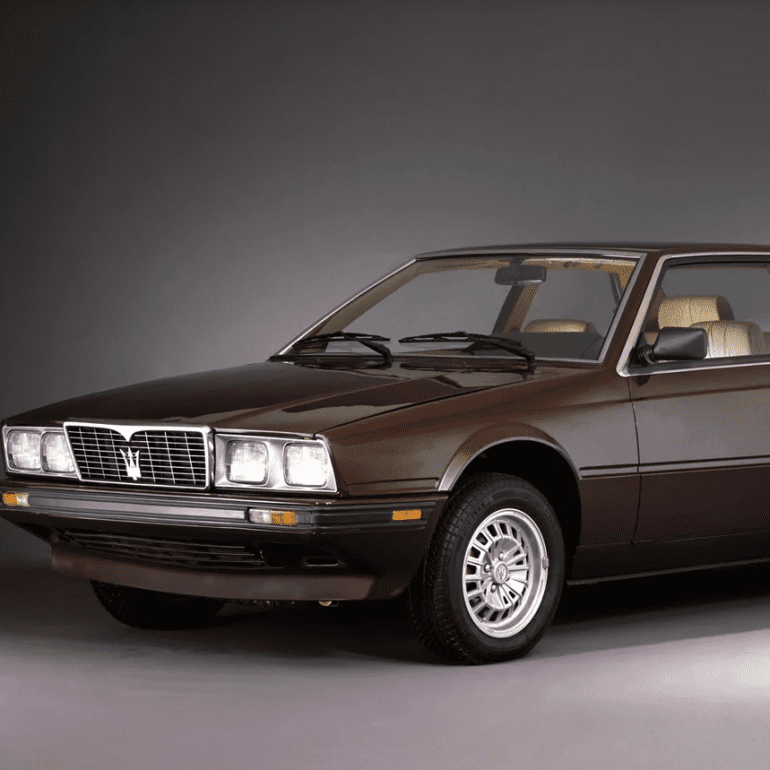
Maserati Biturbo
Model: Tipo AM331
Years: 1982 - 1985
Produced: 11,919 units (all)
Engine: 1996 cc Twin-Turbo V6
Power: 180hp @ 6,000rpm
Top Speed: 134 mph
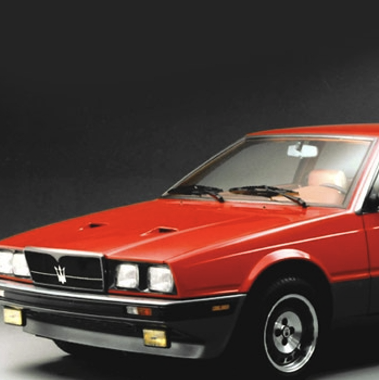
Maserati Biturbo S
Model: Tipo AM331
Years: 1983 - 1994
Produced: 11,919 units (all)
Engine: 1996 cc Twin-Turbo V6
Power: 205hp @ 6,500rpm
Top Speed: 134 mph
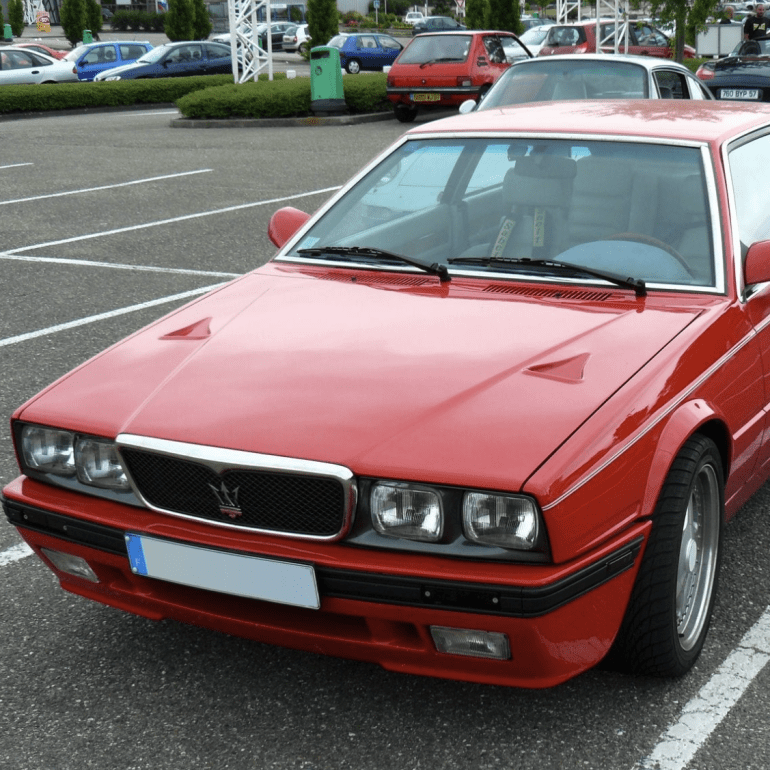
Maserati Biturbo i
Model: Tipo AM331
Years: 1986 - 1990
Produced: 11,919 units (all)
Engine: 1996 cc Twin-Turbo V6
Power: 187hp @ 6,000rpm
Top Speed: 137 mph
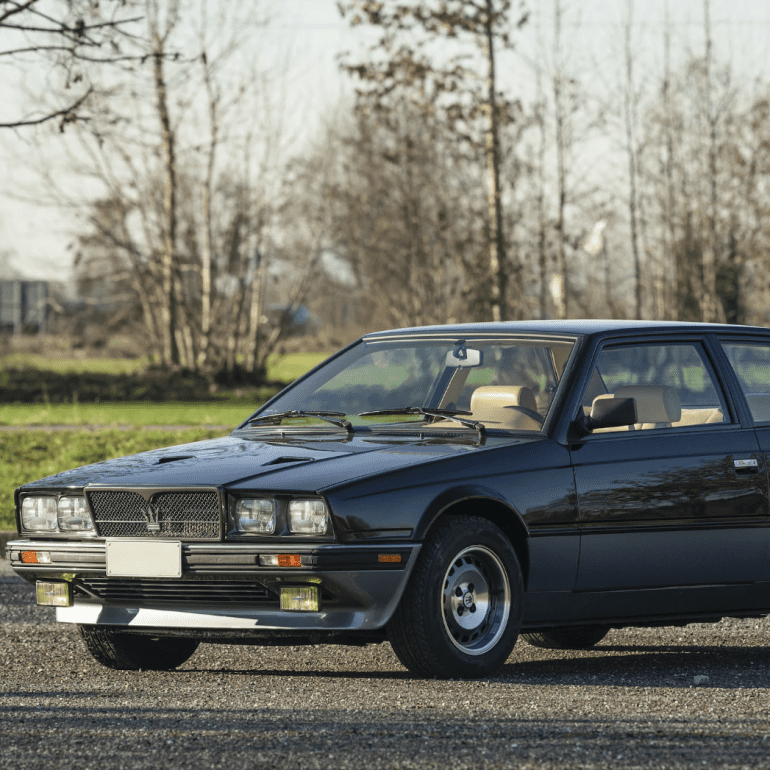
Maserati Biturbo Si
Model: Tipo AM331
Years: 1986 - 1988
Produced: 11,919 units (all)
Engine: 1996 cc Twin-Turbo V6
Power: 220hp @ 6,350 rpm
Top Speed: 142 mph
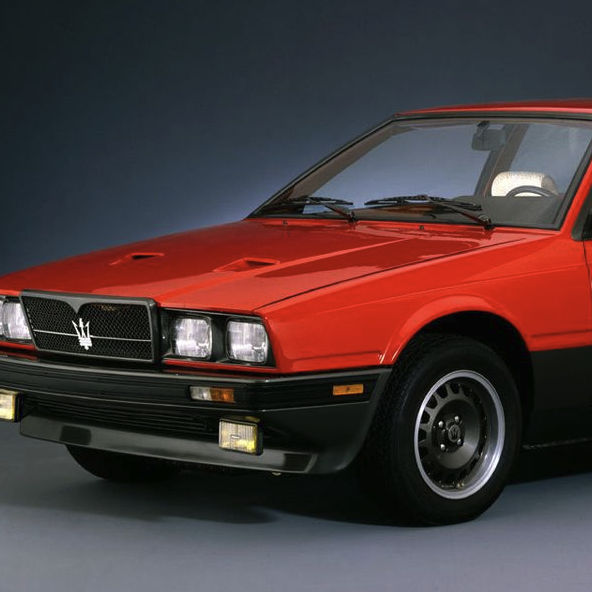
Maserati Biturbo E
Model: Tipo AM331
Years: 1983 - 1985
Produced: 6,500 units (all E)
Engine: 2,491 cc Twin-Turbo V6
Power: 185hp @ 5,550 rpm
Top Speed: 134 mph
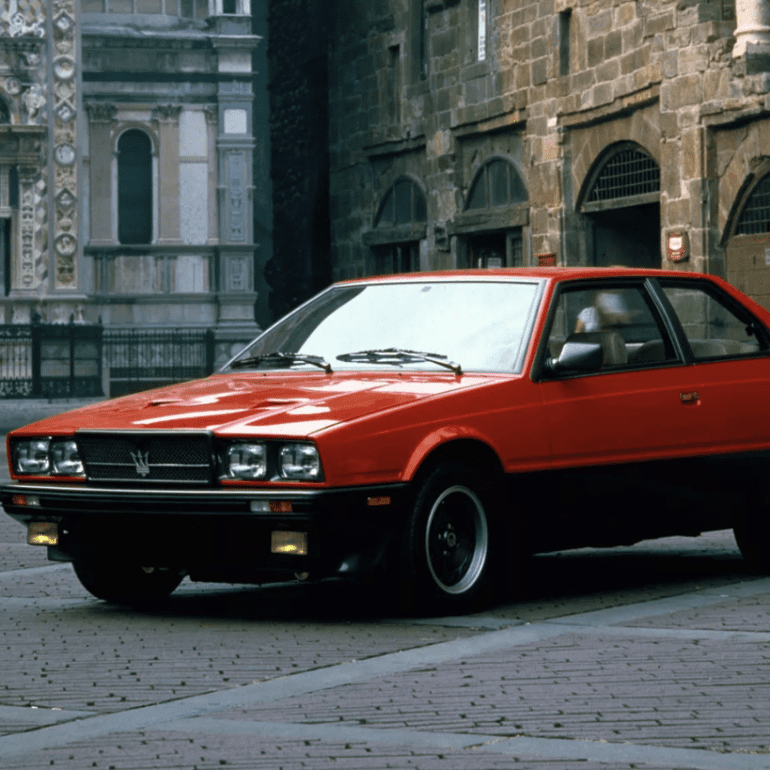
Maserati Biturbo ES 2.5
Model: Tipo AM331
Years: 1984 - 1988
Produced: 6,500 units (all E)
Engine: 2,491 cc Twin-Turbo V6
Power: 196hp @ 5,000 rpm
Top Speed: 137 mph
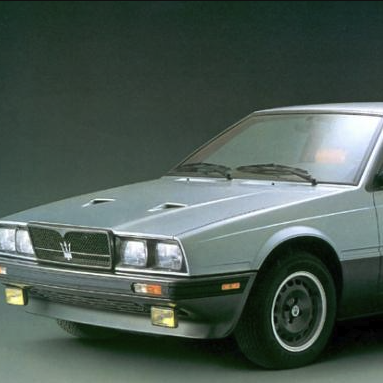
Maserati Biturbo Si 2.5
Model: Tipo AM331
Years: 1987 - 1991
Produced: 6,500 units (all E)
Engine: 2,491 cc Twin-Turbo V6
Power: 188hp @ 5,500 rpm
Top Speed: 134 mph
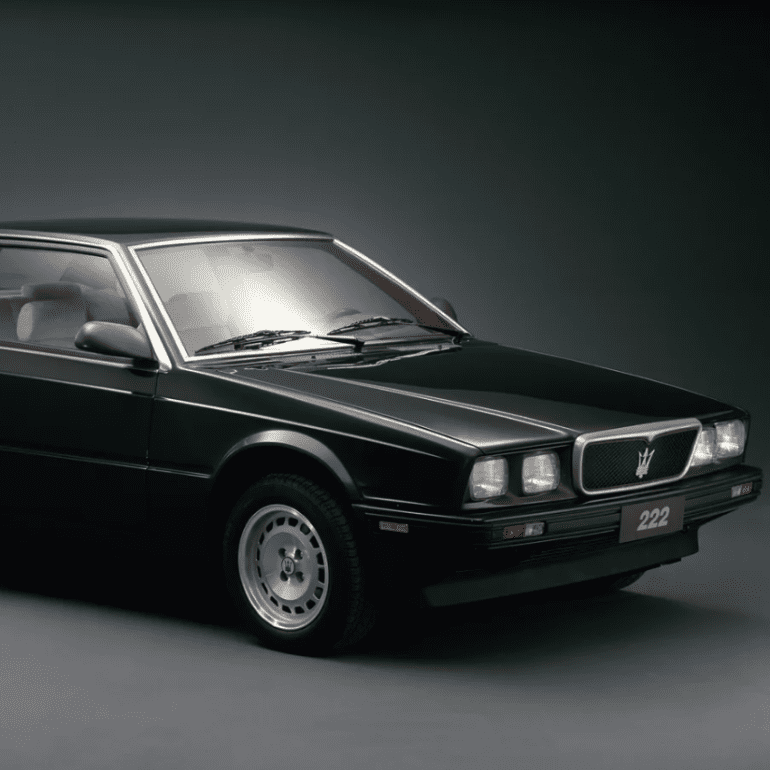
Maserati 222
Model: Tipo AM331
Years: 1988 - 1990
Produced: 1,156 units
Engine: 1,996 cc Twin-Turbo V6
Power: 220hp @ 6,250 rpm
Top Speed: 140 mph
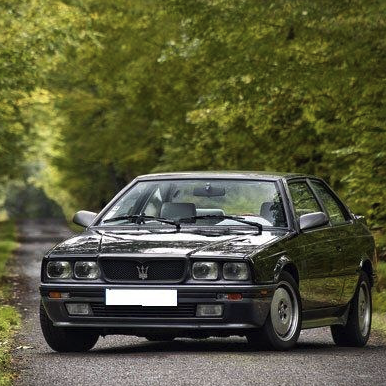
Maserati 2.24v
Model: Tipo AM331
Years: 1988 - 1992
Produced: 1,147 units
Engine: 1,996cc Twin-Turbo V6
Power: 245hp @ 6,200 rpm
Top Speed: 143 mph
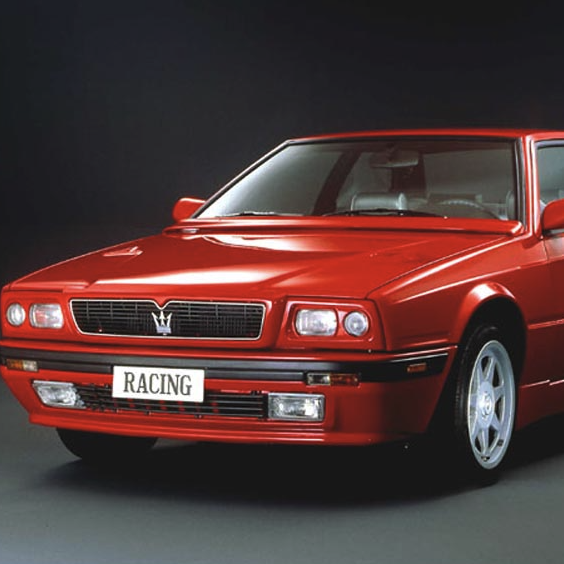
Maserati 2.24V Series II
Model: Tipo AM331
Years: 1991 - 1993
Produced: 254 units
Engine: 1,996 cc Twin-Turbo V6
Power: 240hp @ 6,000 rpm
Top Speed: 143 mph
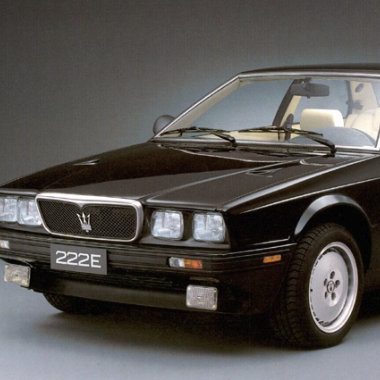
Maserati 222 E
Model: Tipo AM331
Years: 1988 - 1993
Produced: 722 units
Engine: 2,790 cc Twin-Turbo V6
Power: 225hp @ 5,500 rpm
Top Speed: 137 mph
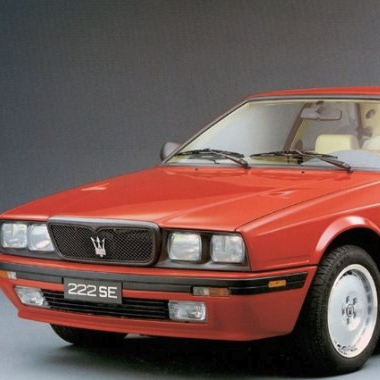
Maserati 222 SE
Model: Tipo AM331
Years: 1990 - 1993
Produced: 220 units
Engine: 2,790 cc Twin-Turbo V6
Power: 250hp @ 5,600 rpm
Top Speed: 143 mph
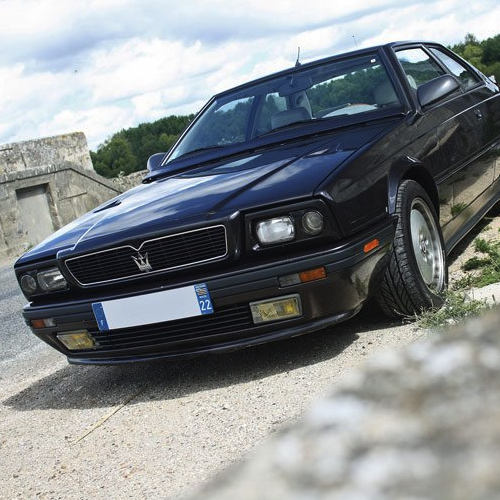
Maserati 222 SE (cat. 222SR)
Model: Tipo AM331
Years: 1990 - 1993
Produced: 220 units
Engine: 2,790 cc Twin-Turbo V6
Power: 225hp @ 5,500 rpm
Top Speed: 137 mph
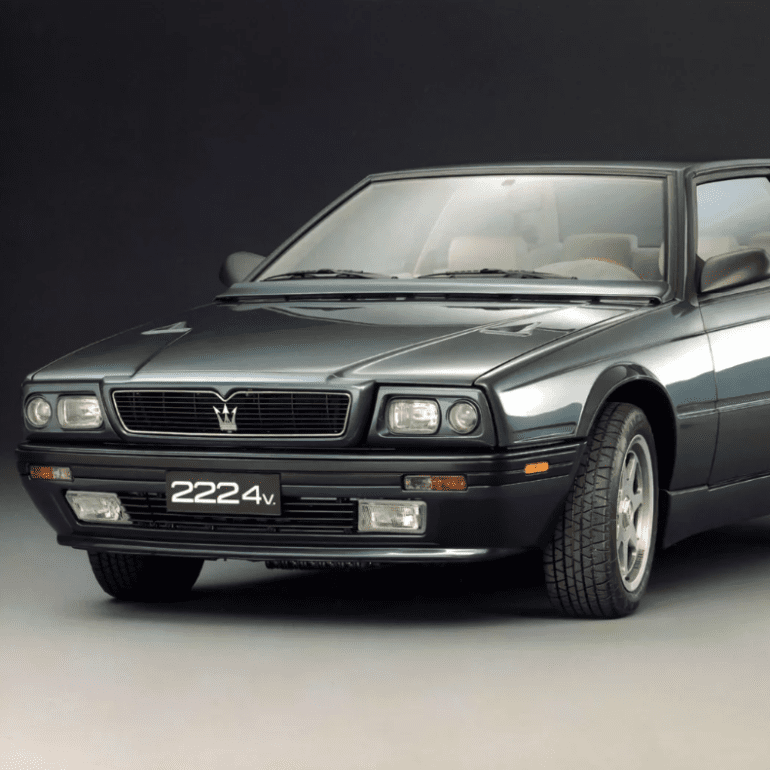
Maserati 222.4 V
Model: Tipo AM331
Years: 1991 - 1994
Produced: 130 units
Engine: 2,790 cc Twin-Turbo V6
Power: 279hp @ 5,500 rpm
Top Speed: 158 mph
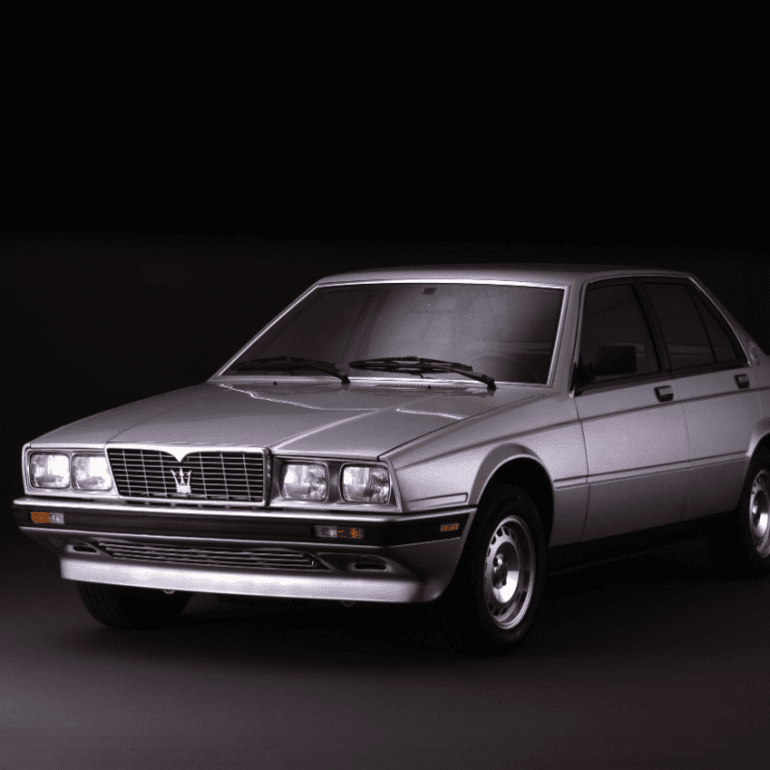
Maserati 425
Model: Tipo AM332
Years: 1983 - 1989
Produced: 2,372 (all 425) units
Engine: 2,491 cc Twin-Turbo V6
Power: 196hp @ 5,600rpm
Top Speed: 134 mph
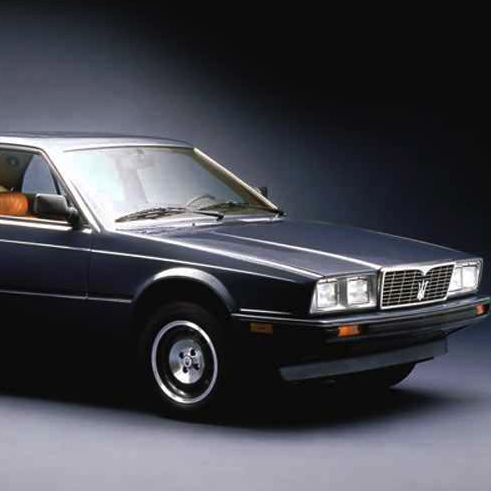
Maserati 425i
Model: Tipo AM332
Years: 1987 - 1989
Produced: 2,372 (all 425) units
Engine: 2,491 cc Twin-Turbo V6
Power: 188hp @ 5,500rpm
Top Speed: 131 mph

Maserati 222.4 V
Model: Tipo AM331
Years: 1991 - 1994
Produced: 130 units
Engine: 2,790 cc Twin-Turbo V6
Power: 279hp @ 5,500 rpm
Top Speed: 158 mph
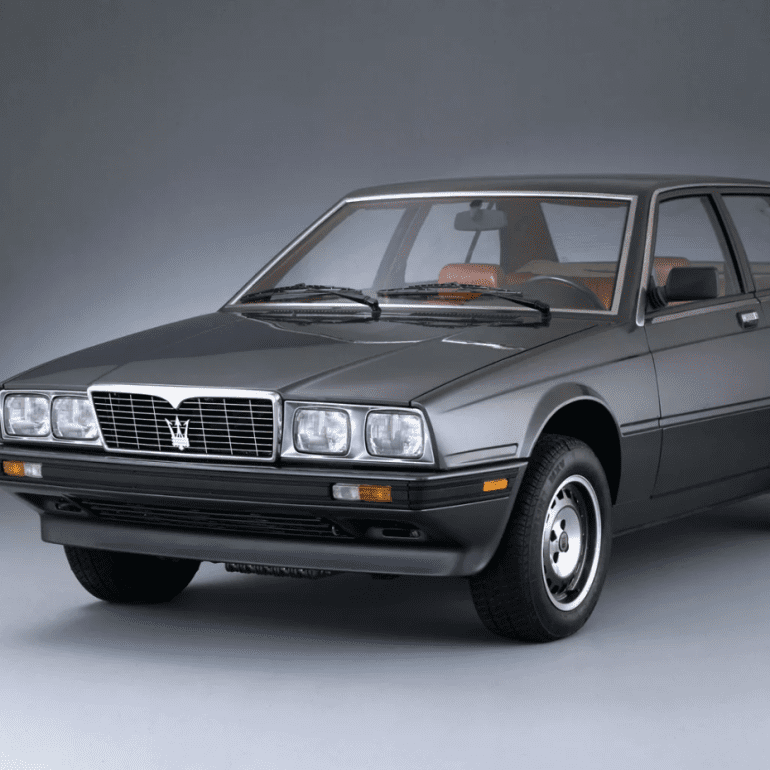
Maserati 420
Model: Tipo AM332
Years: 1985 - 1986
Produced: 1,686 units
Engine: 1,996 cc Twin-Turbo V6
Power: 180hp @ 6,000rpm
Top Speed: 158 mph
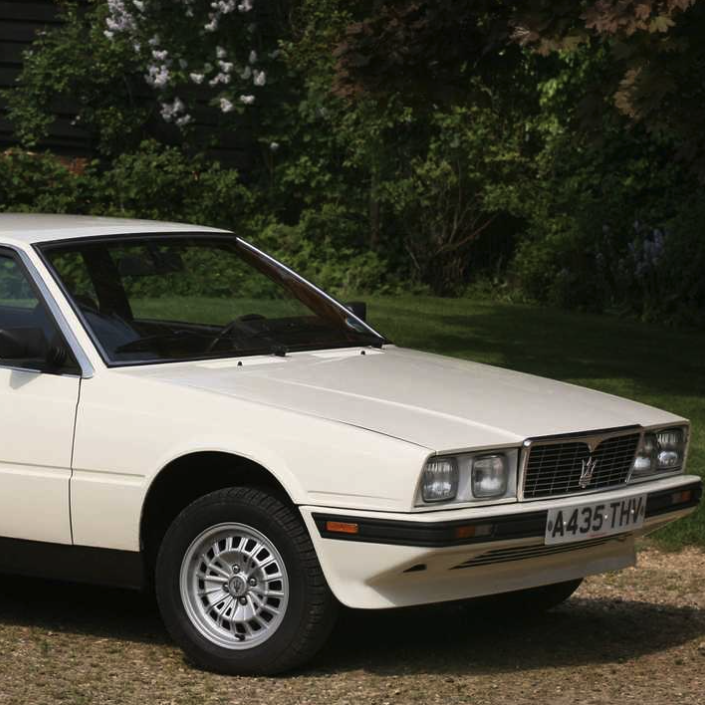
Maserati 425S
Model: Tipo AM332
Years: 1985 - 1987
Produced: 254 units
Engine: 1,996 cc Twin-Turbo V6
Power: 210hp @ 6,500rpm
Top Speed: 135 mph
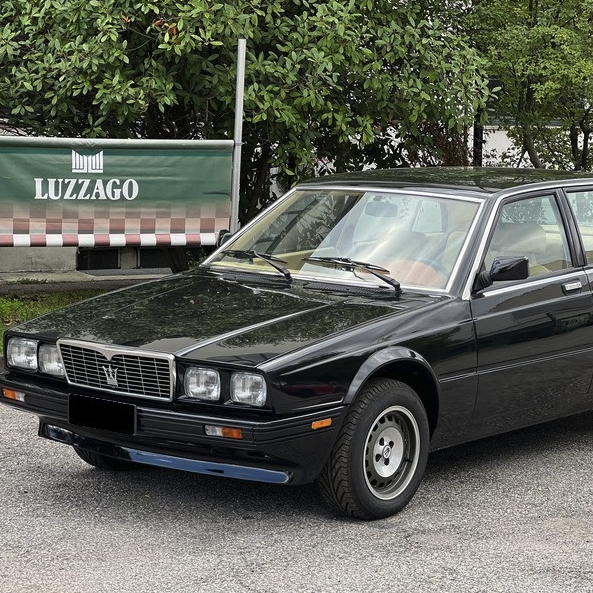
Maserati 420i
Model: Tipo AM332
Years: 1986 - 1988
Produced: 1,124 units
Engine: 1,996 cc Twin-Turbo V6
Power: 190hp @ 6,000rpm
Top Speed: 137 mph
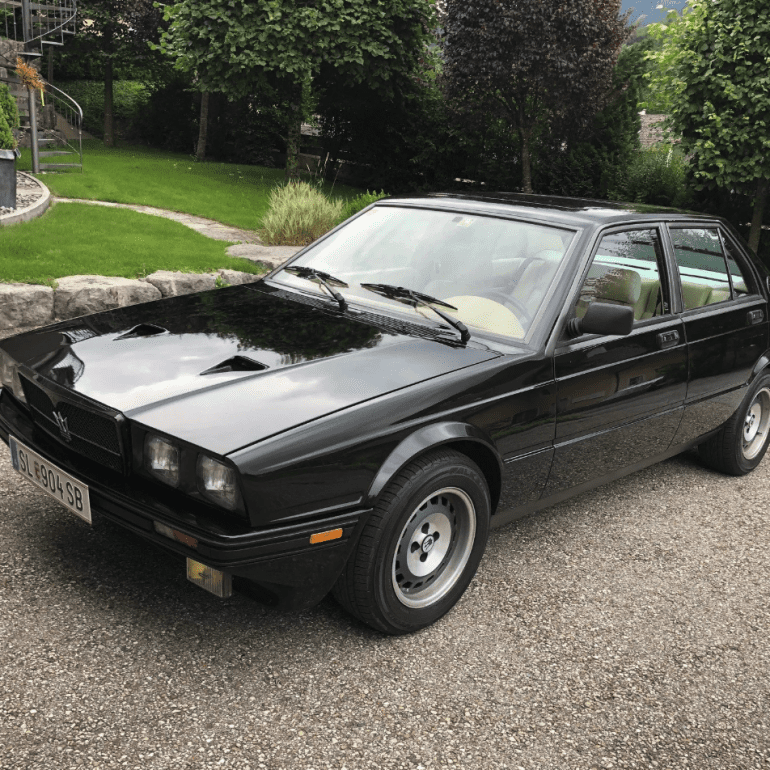
Maserati 420Si
Model: Tipo AM332
Years: 1986 - 1988
Produced: 524 units
Engine: 1,996 cc Twin-Turbo V6
Power: 220hp @ 6,350rpm
Top Speed: 142 mph
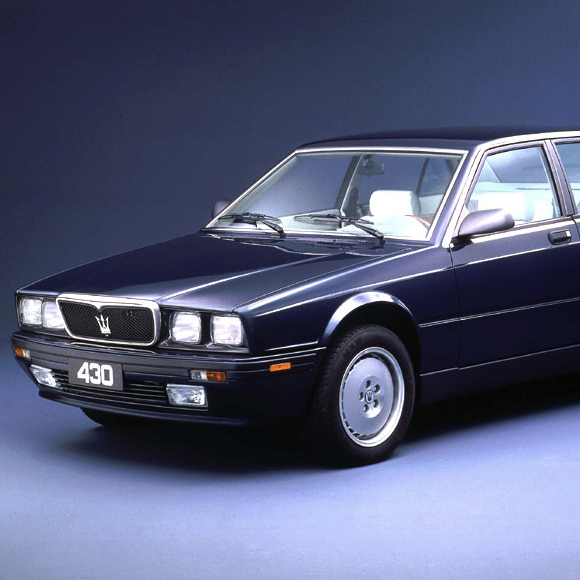
Maserati 430
Model: Tipo AM332
Years: 1985 - 1994
Produced: 254 units
Engine: 2,790 cc Twin-Turbo V6
Power: 250hp @ 5,600rpm
Top Speed: 149 mph
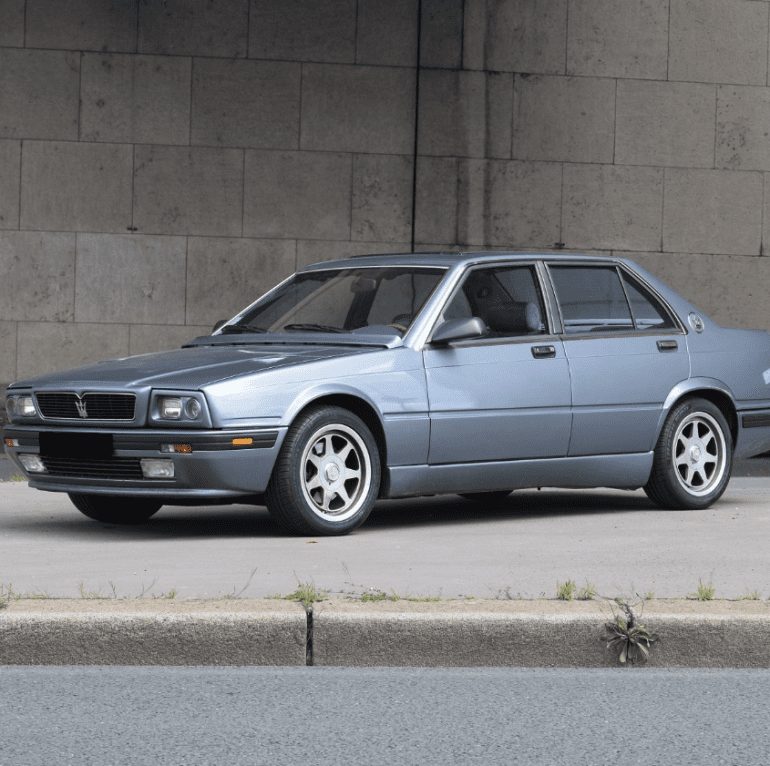
Maserati 430 cat.
Model: Tipo AM332
Years: 1991 - 1994
Produced: 291 units
Engine: 2,790 cc Twin-Turbo V6
Power: 225hp @ 5,500rpm
Top Speed: 143 mph
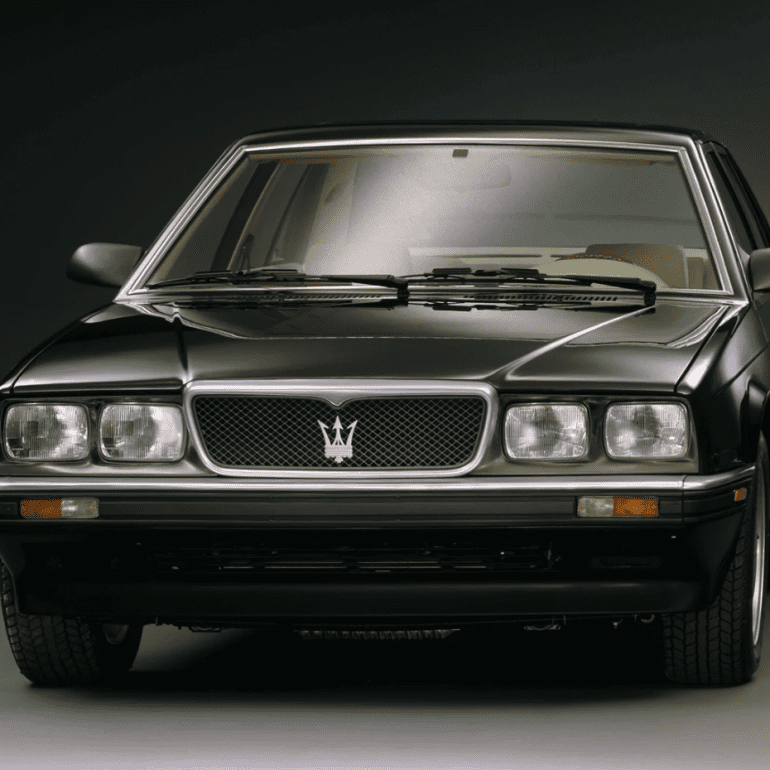
Maserati 430 4v
Model: Tipo AM332
Years: 1991 - 1994
Produced: 291 units
Engine: 2,790 cc Twin-Turbo V6
Power: 279hp @ 5,500rpm
Top Speed: 158 mph
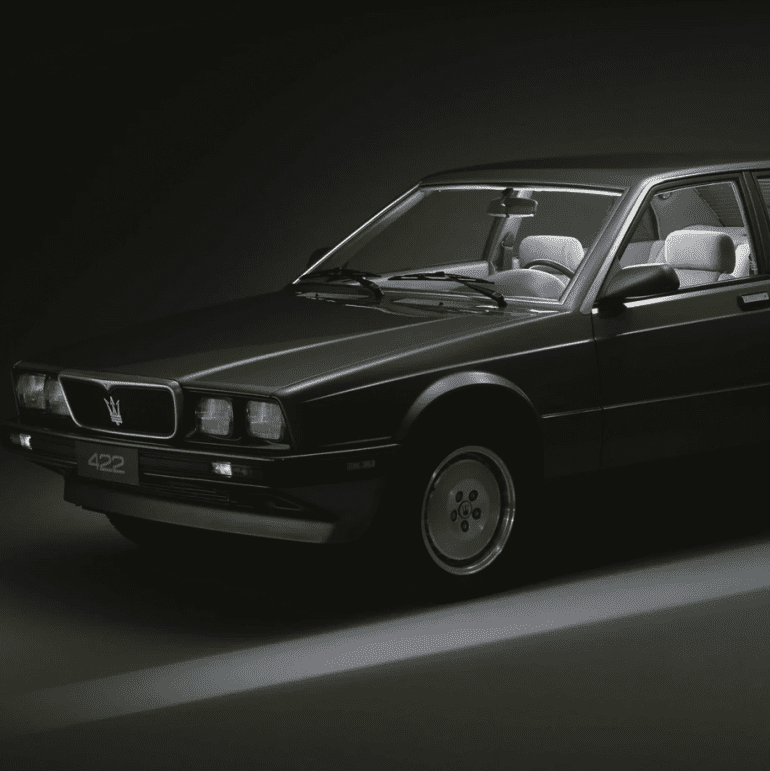
Maserati 422
Model: Tipo AM332
Years: 1988 - 1992
Produced: 978 units
Engine: 1,996 cc Twin-Turbo V6
Power: 220hp @ 6,250rpm
Top Speed: 149 mph
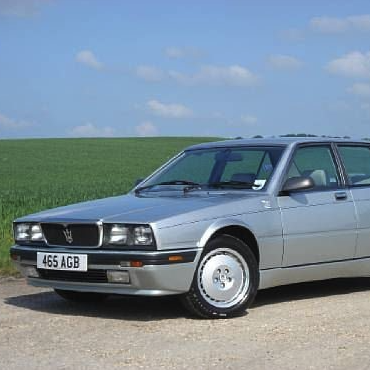
Maserati 4.18v
Model: Tipo AM332
Years: 1990 - 1993
Produced: 77 units
Engine: 1,996 cc Twin-Turbo V6
Power: 220hp @ 6,350rpm
Top Speed: 135 mph
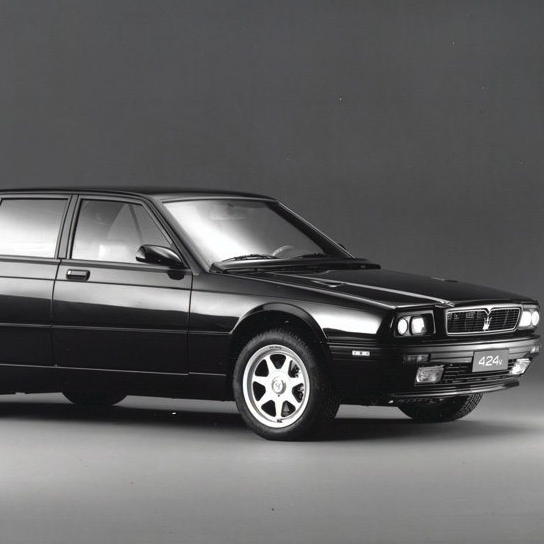
Maserati 4.24v
Model: Tipo AM332
Years: 1990 - 1993
Produced: 384 units
Engine: 1,996 cc Twin-Turbo V6
Power: 245hp @ 6,200rpm
Top Speed: 143 mph
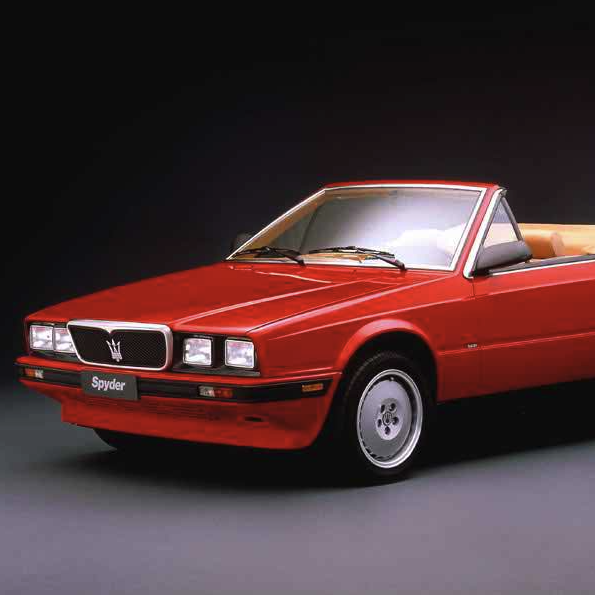
Maserati Biturbo Spyder
Model: Tipo AM333
Years: 1984 - 1986
Produced: 276 units
Engine: 1,996 cc Twin-Turbo V6
Power: 180hp @ 6,000rpm
Top Speed: 134 mph
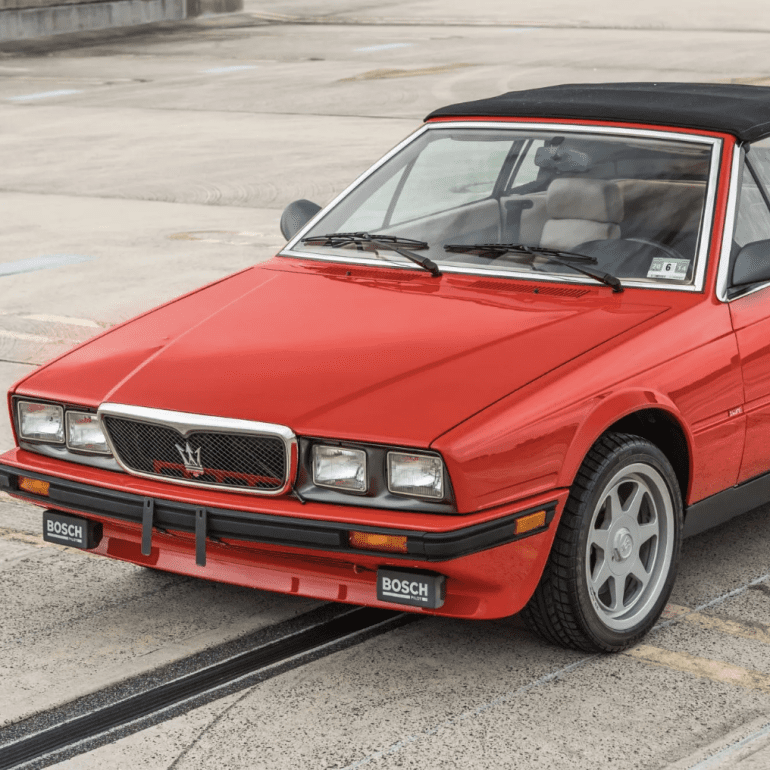
Maserati Biturbo Spyder i
Model: Tipo AM333
Years: 1986 - 1988
Produced: 297 units
Engine: 1,996 cc Twin-Turbo V6
Power: 185hp @ 6,000rpm
Top Speed: 137 mph
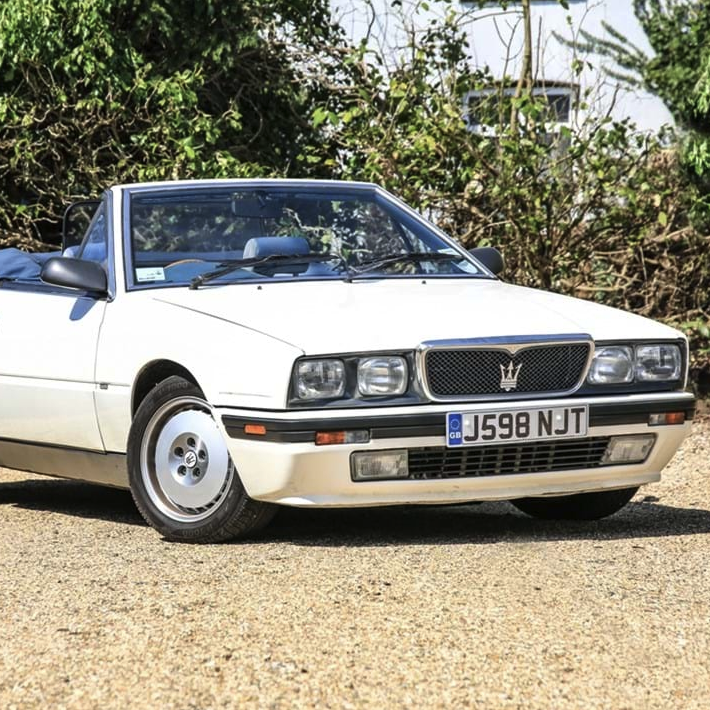
Maserati Spyder 90
Model: Tipo AM333
Years: 1989 - 1992
Produced: 122 units
Engine: 1,996 cc Twin-Turbo V6
Power: 220hp @ 6,250rpm
Top Speed: 143 mph
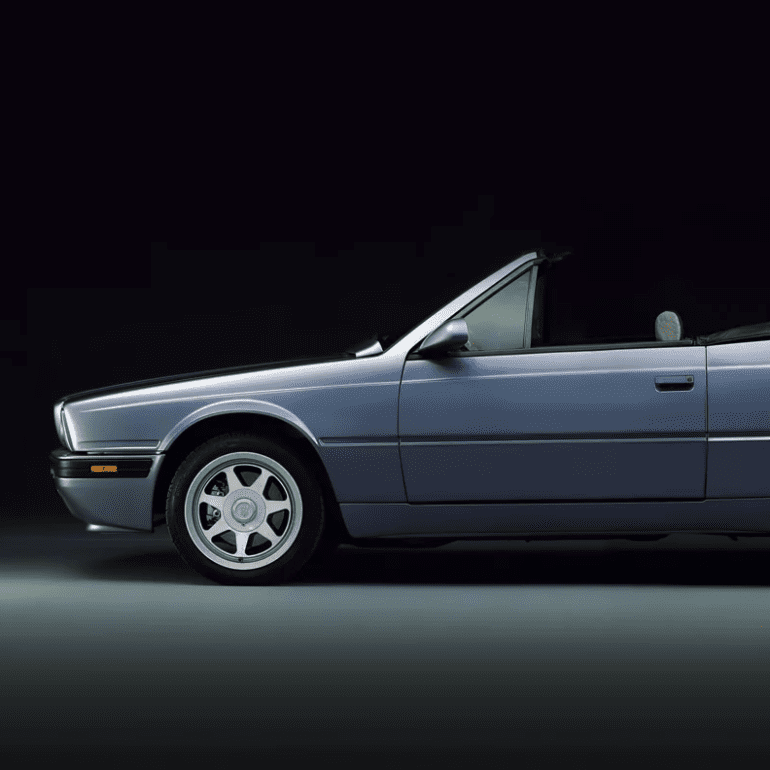
Maserati Spyder III
Model: Tipo AM333
Years: 1991 - 1994
Produced: 509 units
Engine: 1,996 cc Twin-Turbo V6
Power: 245hp @ 6,000rpm
Top Speed: 143 mph
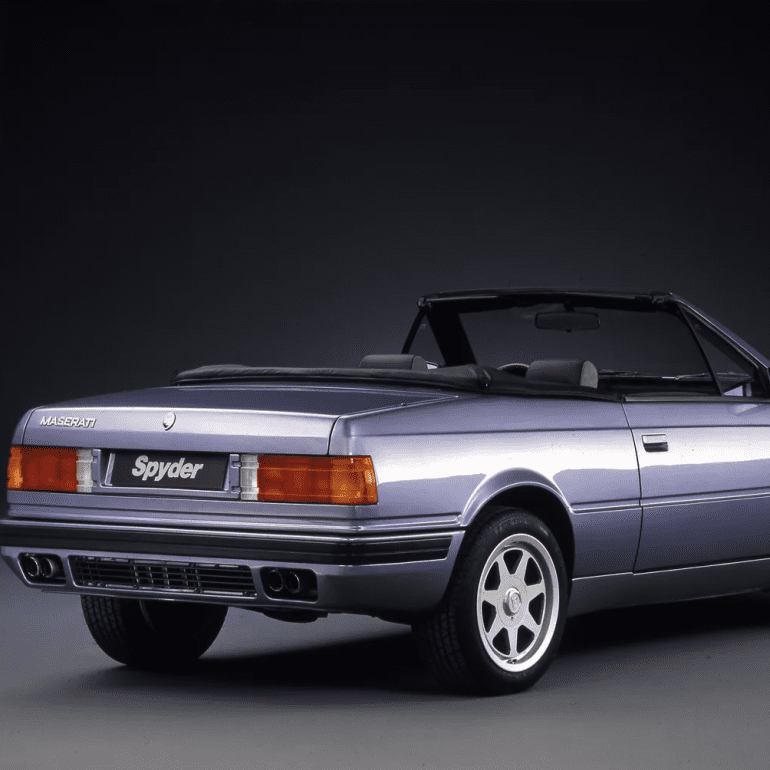
Maserati Spyder III 2.8
Model: Tipo AM333
Years: 1991 - 1994
Produced: 510 units
Engine: 2,790 cc Twin-Turbo V6
Power: 240hp @ 6,200rpm
Top Speed: 140 mph
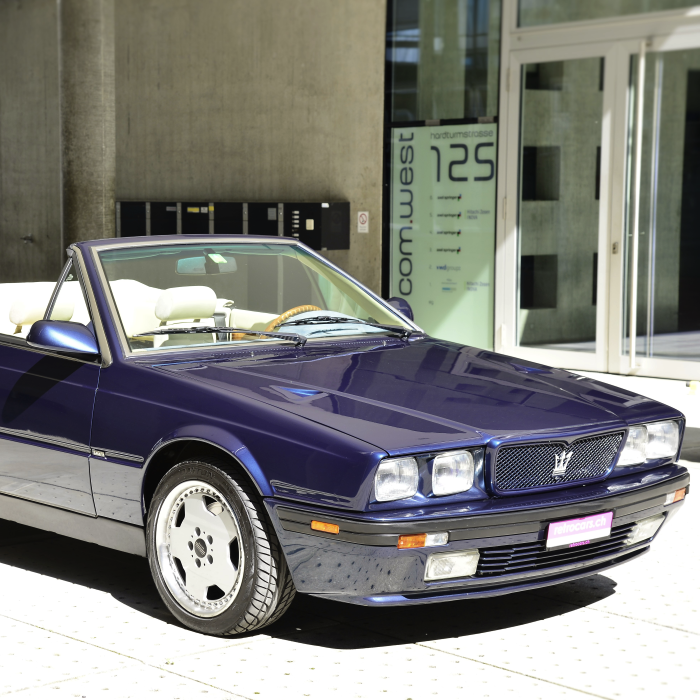
Maserati Spyder III (2800)
Model: Tipo AM333
Years: 1991 - 1994
Produced: 200 units
Engine: 2,790 cc Twin-Turbo V6
Power: 225hp @ 5,500rpm
Top Speed: 137 mph
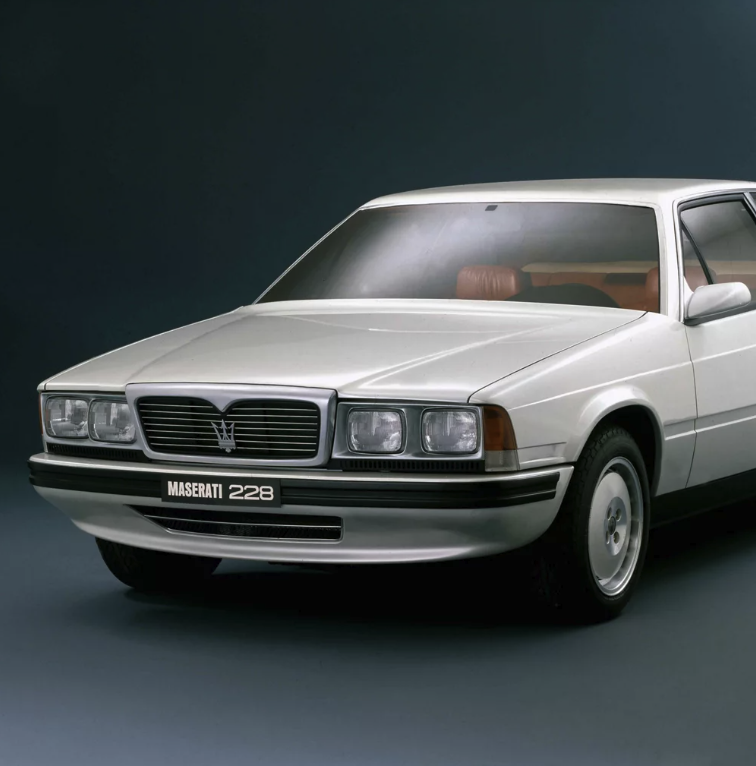
Maserati 228
Model: Tipo AM334
Years: 1987 - 1991
Produced: 469 units
Engine: 2,789 cc Twin-Turbo V6
Power: 250hp @ 5,600rpm
Top Speed: 146 mph
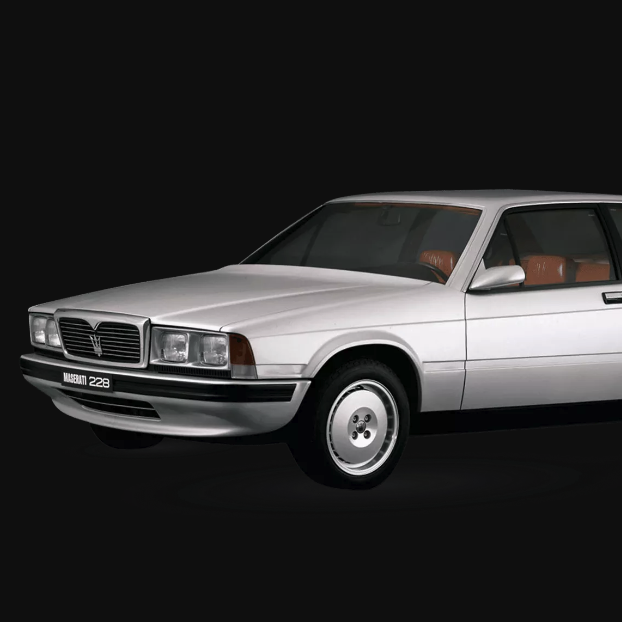
Maserati 228 cat.
Model: Tipo AM334
Years: 1987 - 1991
Produced: 469 units
Engine: 2,789 cc Twin-Turbo V6
Power: 205hp @ 6,500rpm
Top Speed: 137 mph
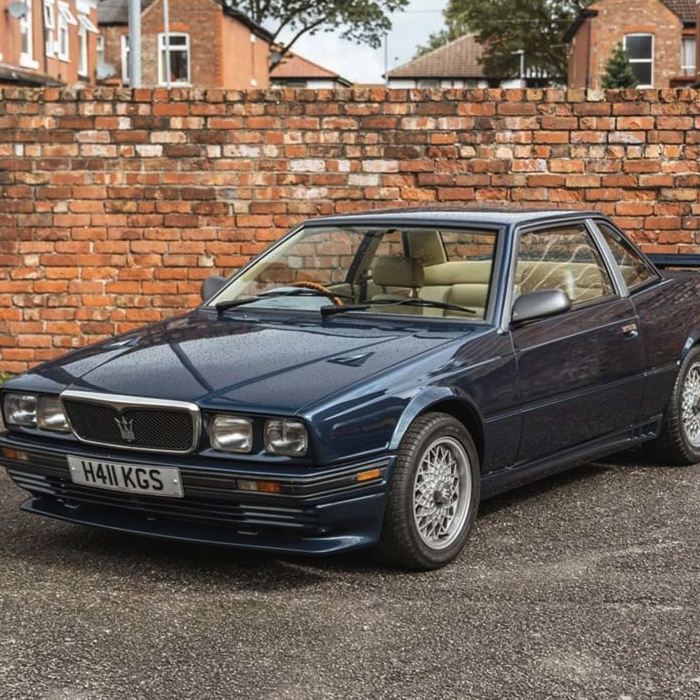
Maserati Karif
Model: Tipo AM339
Years: 1988 - 1991
Produced: 221 units
Engine: 2,790 cc Twin-Turbo V6
Power: 255hp @ 5,500rpm
Top Speed: 158 mph
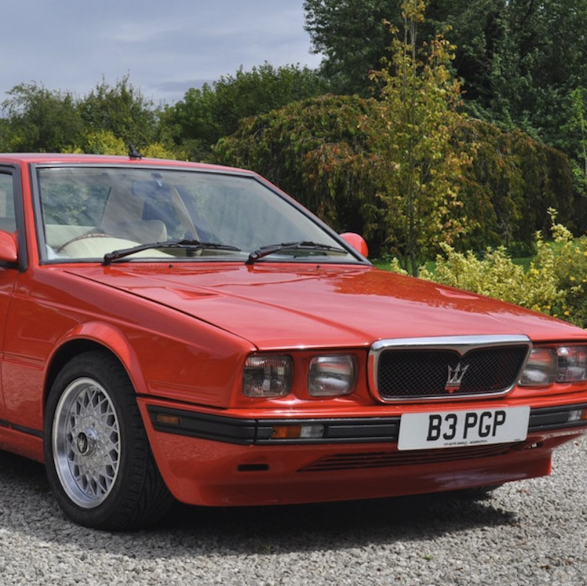
Maserati Karif cat
Model: Tipo AM339
Years: 1988 - 1991
Produced: 221 units
Engine: 2,790 cc Twin-Turbo V6
Power: 205hp @ 6,500rpm
Top Speed: 143 mph
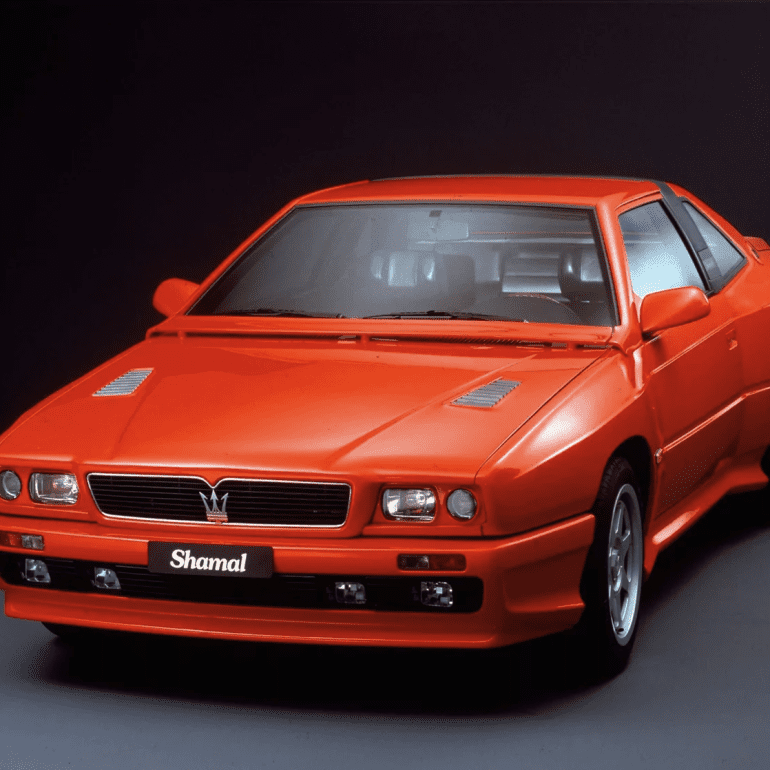
Maserati Shamal
Model: Tipo AM339
Years: 1990 - 1996
Produced: 369 units
Engine: 3,217 cc Twin-Turbo V6
Power: 326hp @ 6,000rpm
Top Speed: 168 mph
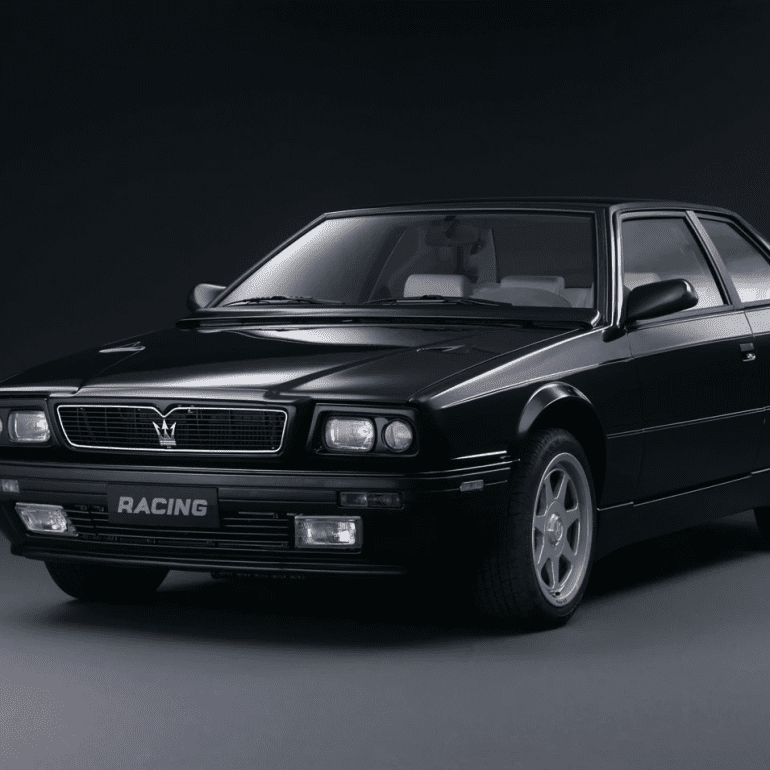
Maserati Racing
Model: Tipo AM331
Years: 1990 - 1992
Produced: 230 units
Engine: 1,996 cc Twin-Turbo V6
Power: 283hp @ 6,000rpm
Top Speed: 159 mph
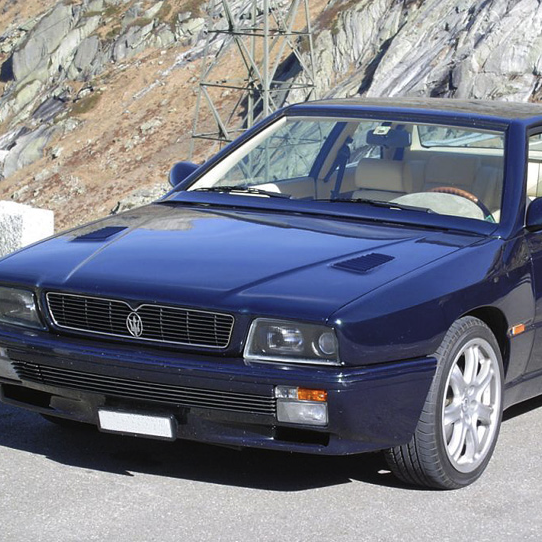
Maserati Ghibli II
Model: Tipo AM336
Years: 1988 - 1991
Produced: 1,157 units
Engine: 2,790 cc Twin-Turbo V6
Power: 306hp @ 6,250rpm
Top Speed: 162 mph
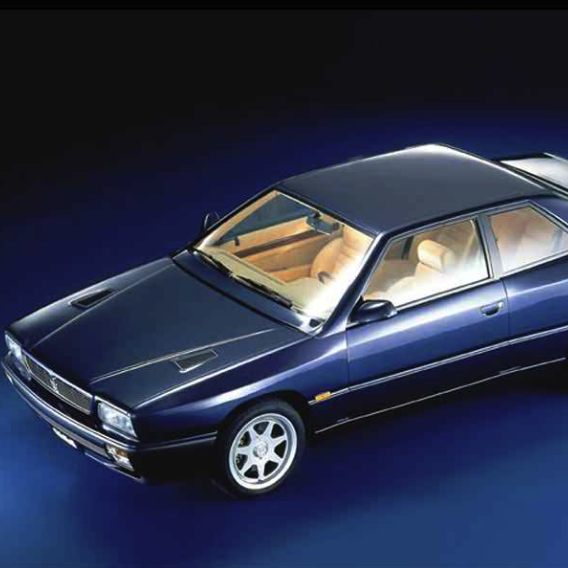
Maserati Ghibli 2.8
Model: Tipo AM335
Years: 1992 - 1998
Produced: 1,063 units
Engine: 2,790 cc Twin-Turbo V6
Power: 260hp @ 6,000rpm
Top Speed: 162 mph
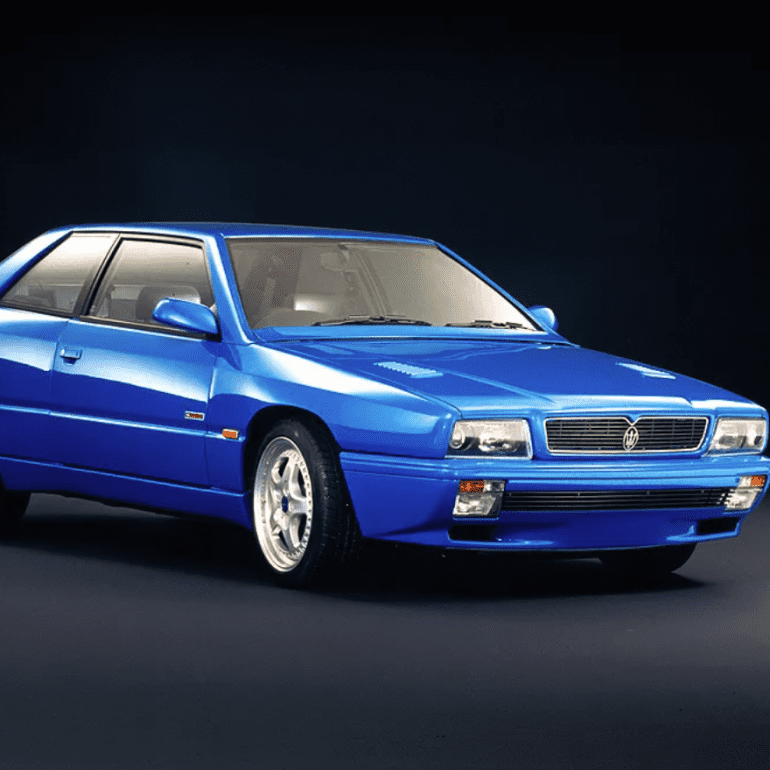
Maserati Ghibli Cup
Model: Tipo AM336
Years: 1995 - 1997
Produced: 60 units
Engine: 1,996 cc Twin-Turbo V6
Power: 330hp @ 6,500rpm
Top Speed: 168 mph
Our Favorite Maserati Biturbo Images
The Maserati Biturbo's design was boxy and sharp-edged, a clear product of the 1980s. Its lines were angular, almost slab-sided, with a focus on functionality rather than flowing elegance. Details like the aggressive grille with the iconic Maserati trident and sporty wheels hinted at the performance.
"The Maserati Biturbo: When the only thing more unreliable than the car is the dealer network."
Anonymous car enthusiast


